You 5-days in Tokyo adventure and wondering how to make the most of it? Look no further! Tokyo is the coolest megapolis with an epic mix of modern marvels, historic temples, captivating museums, lush parks, and cutting-edge technology that awaits your exploration.
This dynamic city, a symbol of contemporary progress, is an essential addition to your bucket list. There is an endless array of attractions and experiences which somehow you need to fit into a perfect Tokyo 5 day itinerary.
Embark on an unforgettable journey through Tokyo with my meticulously crafted 5-day itinerary that covers all the must-visit sights and hidden treasures. This guide ensures that you really maximize your time and get to enjoy Tokyo’s rich history, vibrant culture, and stunning natural beauty. And if you’re planning to visit more places, make sure to check my 2 weeks in Japan itinerary.
Your 5 days in Tokyo will lead you through the city’s iconic landmarks, fascinating neighbourhoods, and unique experiences that will leave you with memories to last a lifetime. Get ready for the ultimate Tokyo adventure with our in-depth, 5-day Tokyo itinerary that promises a truly immersive experience.
Buy this Tokyo 5 Day Itinerary as a PDF ebook. It’s a printable itinerary with useful tips and resources that you can take with you on your trip to Japan.
Table of Contents
- Tips for first time visitors
- Useful resources for first timers
- How to get around Tokyo
- How to Get from Narita to Tokyo
- How to Get from Haneda to Tokyo
- Where to stay in Tokyo
- Day 1: Shibuya and Harajuku
- Day 2: Shinjuku
- Day 3: Asakusa and Ueno
- Day 4: Ginza & Central Tokyo
- Day 5: Aoyama and Roppongi
- Final Thoughts on this 5 days Tokyo itinerary
- Frequently Asked Questions
Tips for first time visitors
- Get a prepaid Suica or Pasmo card for seamless commuting on public transportation. These rechargeable cards can be used on trains, buses, and even at some stores. Purchase them at major subway stations or the airport.
- To stay connected, rent a pocket Wi-Fi device or buy a prepaid SIM card. which allows you to access navigation apps, translation tools, and conduct on-the-go research. Pre-order your device or SIM card and pick it up at Narita or Haneda airport, or arrange for delivery to your hotel reception.
- Tokyo’s public system can be overwhelming, but with the use of Google Maps, it’s super easy to get around. The metro lines are colour coded for your ease and Google Maps provides real-time train schedules, optimal boarding carriages, and connection points.
- While many places accept cards, smaller establishments, especially in older neighbourhoods, may prefer cash. Carry some Japanese yen with you, and remember that major banks in Japan now accommodate international cards for cash withdrawals. Speaking of money, check out how expensive Japan is.
- Be aware of Japanese customs and manners such as removing your shoes before entering someone’s home or specific rooms in restaurants, bowing as a form of greeting, and not tipping at restaurants.
- Learning basic Japanese phrases can enhance your trip experience. If you’re serious about learning the language, I recommend Japanese with Aimee. Use “YCTRAVEL” when you sign up and get 10% discount on the course. It’s a great deal, right?
- Tokyo is a gastronomic haven, so research and plan your culinary experiences in advance. Popular restaurants may have long queues, while others might require reservations.
- Tokyo is vast and fascinating, so be prepared for extensive walking. Wear comfortable travel shoes; during a recent Tokyo visit, I walked 20 km daily!
- For those on a budget, visit Japanese convenience stores, or “konbini,” for snacks, drinks, and meals at affordable prices. You can also grab a quick drink or bite from a vending machine.
Buy this Tokyo 5 Day Itinerary as a PDF ebook. It’s a printable itinerary with useful tips and resources that you can take with you on your trip to Japan.
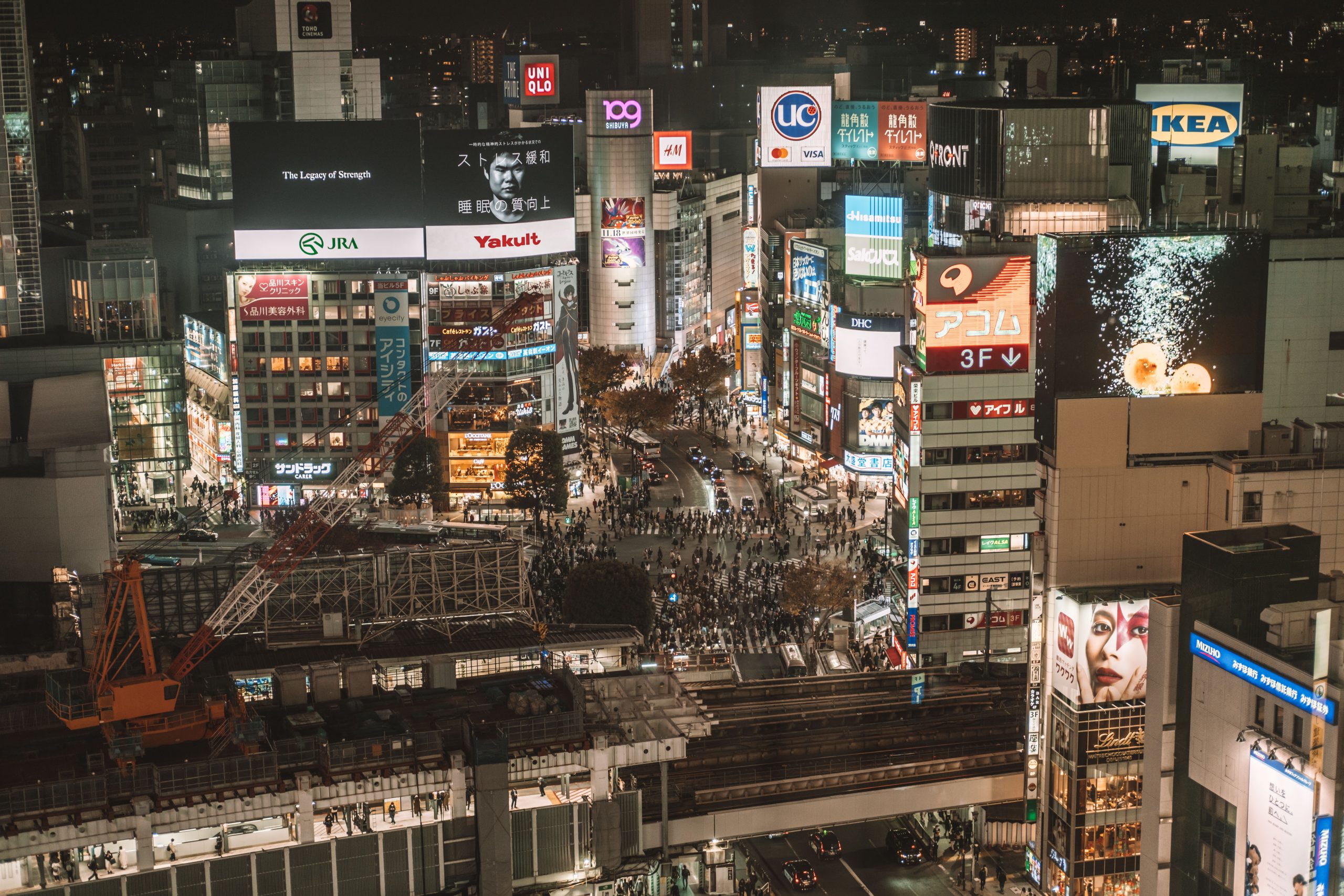
Useful resources for first timers
- Make sure to read all my tips before planning your first trip to Japan. It includes many dos and don’ts for your travels.
- Learn what to pack for Japan to make sure you blend in and stay comfortable.
- Check the best time to visit Japan. Remember that cherry blossom season is a lot busier and pricier. But I tend to recommend autumn for the koyo festival.
- I highly recommend booking most of your activities in Tokyo in advance. Popular attractions can book up in advance, so it’s always best to have all your tickets ready. This helps you avoid queuing on the day.
- Japanese food is excellent everywhere you go. However, I do recommend a food tour to take advantage of lesser known gems. Don’t shy from a pub crawl either if you want to experience Tokyo at night.
- If you wish to stay a little extra in Japan, make sure to check my Japan itineraries with details on where to go, and how to plan the perfect trip. For this, I recommend that you invest in a JR Pass to save you lots of money.
- I strongly suggest that you get our Japanese customs and manners book, with fun Japanese illustrations and crucial information on how you should behave in various scenarios when visiting Tokyo! I made this in partnership with a Tokyo illustrator.
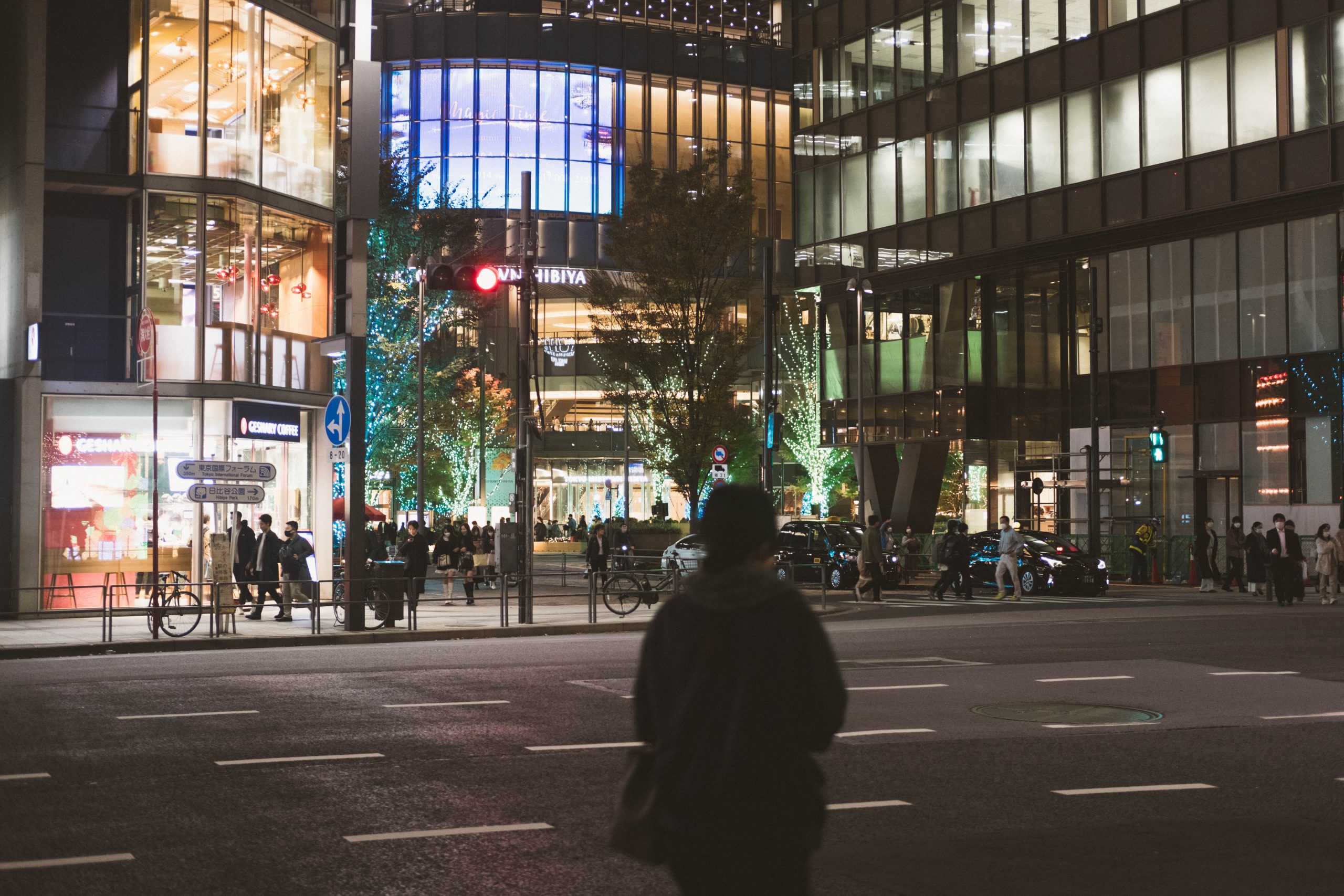
How to get around Tokyo
Tokyo is an enormous city made up of 23 special wards. Don’t worry, though, as Tokyo has an impressive and well-connected subway and train system that makes it easy to reach any attraction or location on this itinerary.
To make your travels around Tokyo seamless, consider getting a prepaid Suica or Pasmo card, as mentioned above. These cards allow you to simply tap in and out of subway stations and can also be used on trains, including the Yamanote line.
Many of Tokyo’s neighbourhoods are pedestrian-friendly, so once you arrive at your destination, it’s best to explore on foot. Tokyo is a safe city at day and night, so exploration on foot will feel calm and comfortable.
You can easily rent a bike and explore parts of Tokyo on wheels. You will notice that in more residential neighbourhoods as well, bikes are very popular with locals.

Japan Rail Pass
The optimal way to explore Japan is with a rail pass that is available for durations of 7, 14, or 21 days, offering unlimited travel across the country. Shinkansen included!
How to Get from Narita to Tokyo
- Narita Express (My recommended route): The Narita Express is a convenient and comfortable limited express train that connects Narita Airport with major stations in Tokyo. The journey to Tokyo Station takes around 1 hour and costs about 3,070 yen for an ordinary class seat. You can use your JR Pass on this route.
- Keisei Skyliner: The Keisei Skyliner is a high-speed train that connects Narita Airport with Nippori Station and Ueno Station. The trip takes around 45 minutes to Ueno. The fare for a reserved seat is about 2,520 yen. From Ueno Station, change to a local subway line to get to your final destination in Tokyo.
- Limousine Bus: Airport limousine buses connect Narita Airport with major hotels and train stations in Tokyo. The journey takes around 60-120 minutes, and fares range from 2,800 to 3,100 yen. The pro for Limousine buses is that they can drop you off directly at your hotel. The cons are the cost and length of journey.
How to Get from Haneda to Tokyo
- Tokyo Monorail (My recommended route): The Tokyo Monorail connects Haneda Airport to Hamamatsucho Station. From there, you can transfer to the JR Yamanote Line and JR Keihin-Tohoku Line. The journey takes approximately 13-18 minutes and costs 500 yen. You can use your JR Pass on this route.
- Keikyu Line: The Keikyu Line connects Haneda Airport to Shinagawa Station. The trip takes about 11-14 minutes and costs 300 yen. At Shinagawa Station, transfer to local subway lines to reach your final destination in Tokyo.
- Limousine Bus: Airport limousine buses connect Haneda Airport with major hotels and train stations in Tokyo. The journey can take between 30-90 minutes, depending on traffic, and fares range from 800 to 1,300 yen. The pro for Limousine buses is that they can drop you off directly (or very close) to your hotel. The cons are the cost and length of journey.

Where to stay in Tokyo
You will want to pick the best possible accommodation for your 5 days in Tokyo, which is why I recommend positioning yourself as close to a subway station as possible. I, personally, like staying in Chiyoda, Ginza, or Shibuya areas as they are very well-connected to the rest of Tokyo, thus making it easier to navigate and complete your itinerary with less hassle.
For a complete breakdown on all important areas in Tokyo and reviews of my favourite hotels, read my where to stay in Tokyo article. I talk about different areas and why they are most suitable for your type of travel style and budget. I also recommend my favourite hotels in Tokyo, organized by budget.
- Best luxury hotel: Hotel Chinzanso Tokyo
- Best mid-range hotel: The Blossom Hibiya
- Best budget hotel: Tokyu Stay Shinjuku Eastside
For more hotels and reviews, I recommend using Booking.com for accommodation in Tokyo.
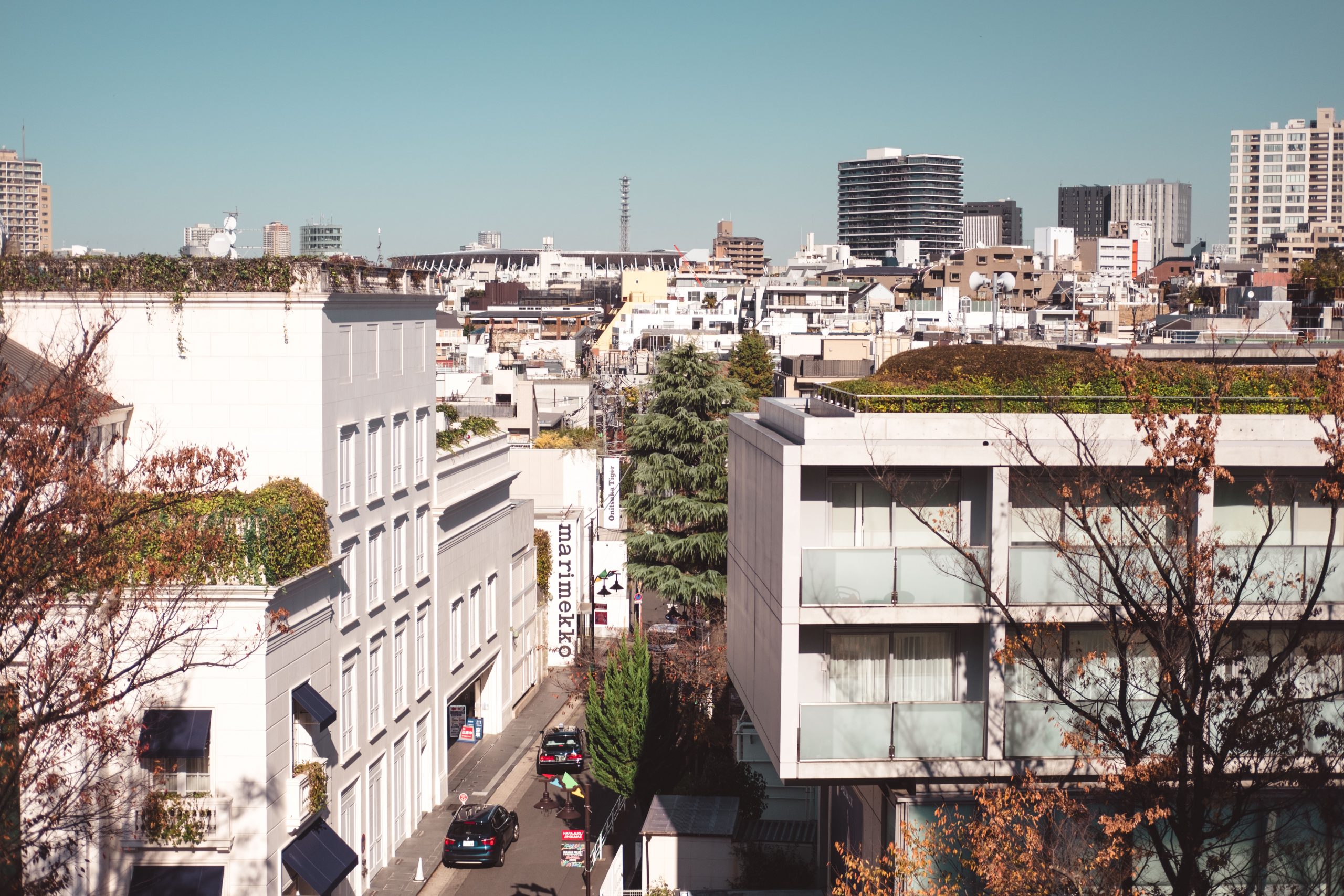
Day 1: Shibuya and Harajuku
- Meiji Shrine – Begin your 5 days in Tokyo adventure with a visit to the tranquil Meiji Shrine and neighbouring Yoyogi Park. The Meiji Shrine, dedicated to Emperor Meiji and Empress Shoken, offers a serene atmosphere amidst a lush forest. Enter through a grand torii gate and stroll along a peaceful gravel path, where you may even witness a traditional Japanese wedding ceremony. While at the temple, purchase an “ema”, which is a Japanese wishing wooden plaque. Write your wish on it and hang it on the wall at the temple, so the deities can make sure your wish will come true.
Location: 1-1 Yoyogikamizonocho, Shibuya City, Tokyo
How to get there: Take the JR Yamanote Line to Harajuku Station. The shrine is just a 5-minute walk from the station.
Useful tips and information: The shrine is open from sunrise to sunset, and admission is free. Please follow proper etiquette while visiting this sacred site by bowing at the entrance and cleansing your hands and mouth at the purification fountain.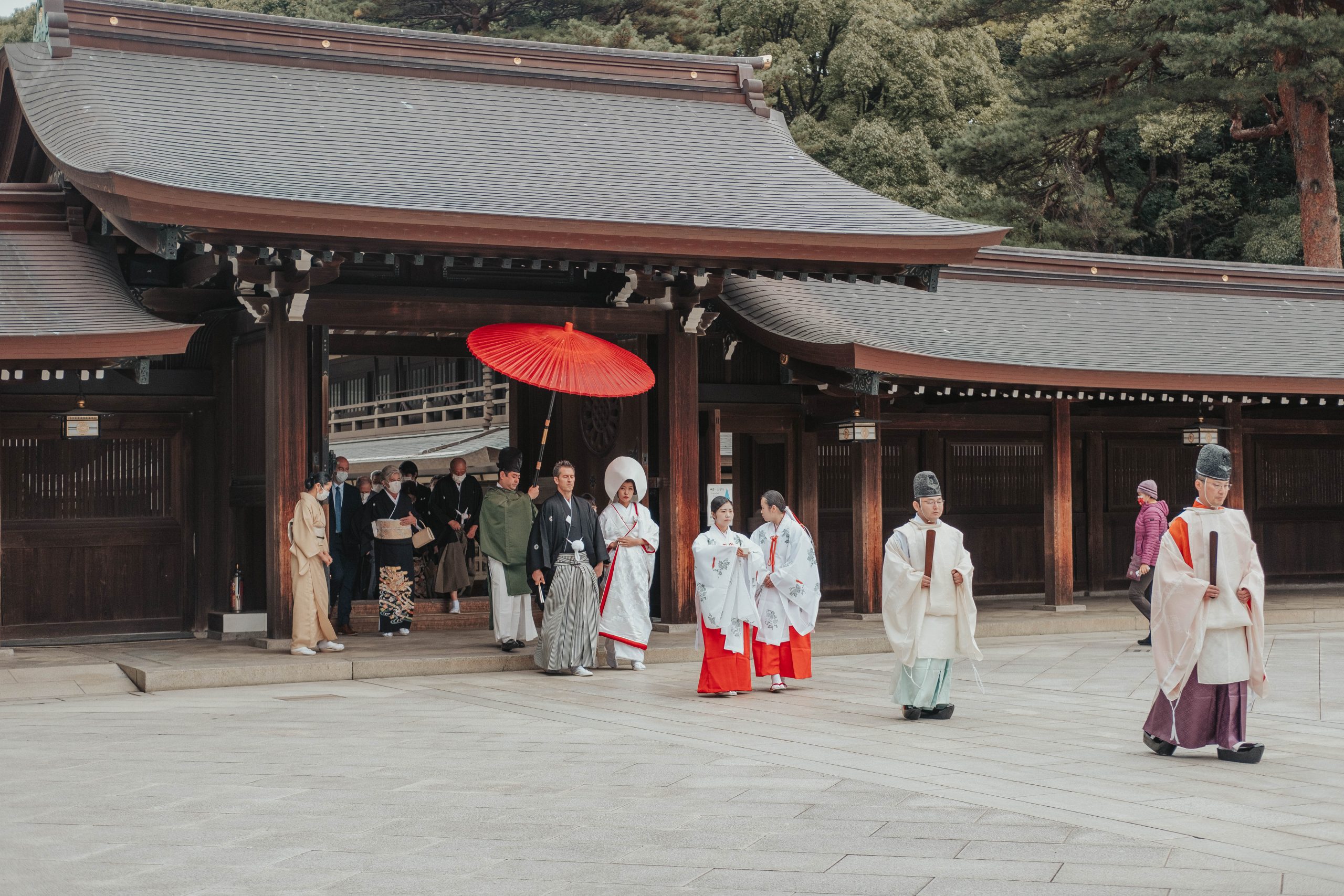
- Yoyogi Park – Just a few minutes from Meiji Shrine, Yoyogi Park is a popular spot for locals to engage in various activities like jogging, yoga, and dancing. Visit during cherry blossom season for stunning views or during the koyo festival in autumn to admire vibrant red leaves, particularly along the ginkgo tree avenue.
Location: 2-1 YoyogiKamizonocho, Shibuya City, Tokyo
How to get there: Yoyogi Park is located adjacent to Meiji Shrine. It’s just a short walk from the shrine.
Useful tips and information: The park is open 24/7 and admission is free. It’s a popular spot for picnics, jogging, and various outdoor activities. During the cherry blossom season, it’s an excellent location for hanami (flower viewing) parties.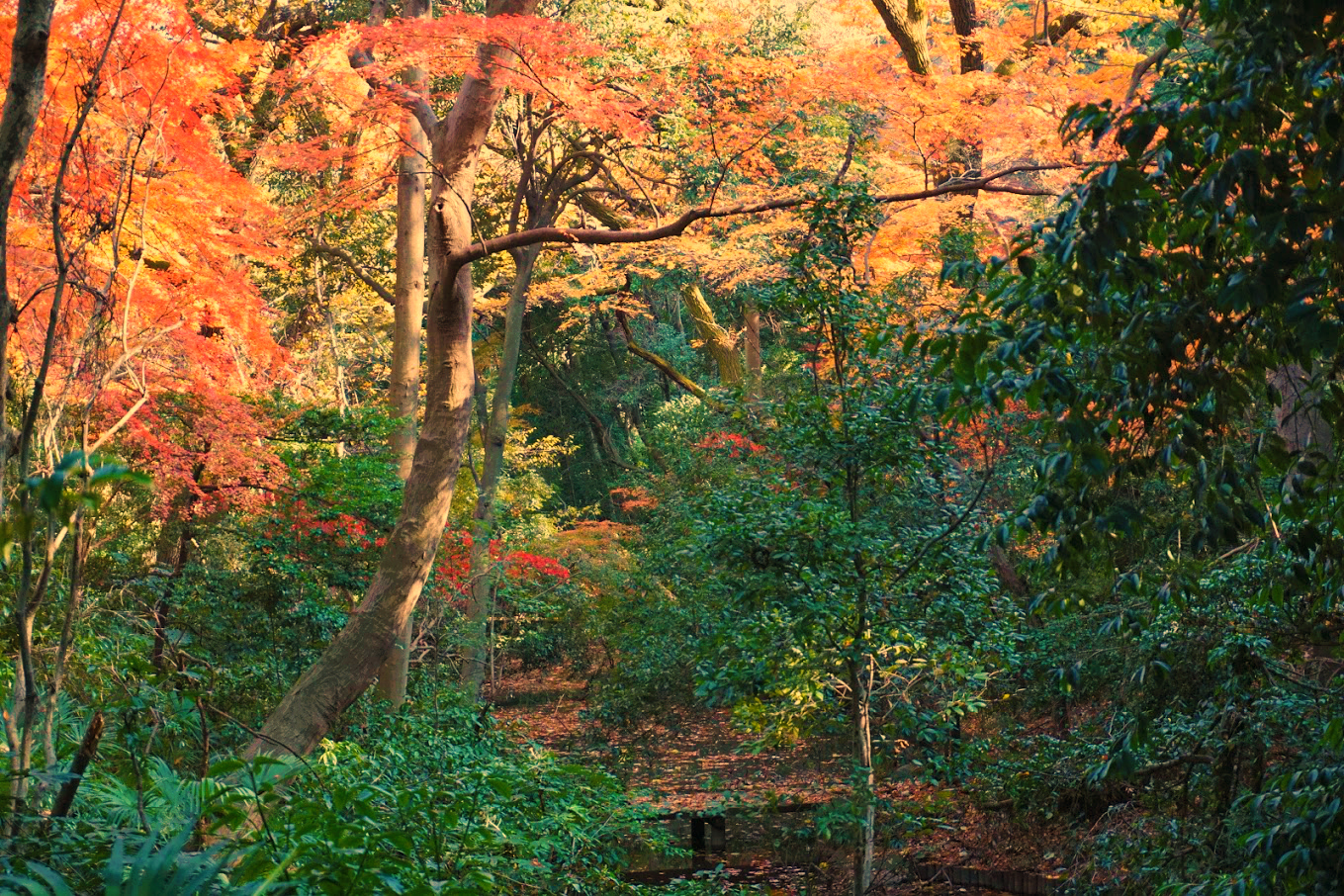
- Takeshita Street – Takeshita Street is a (busy!) pedestrian thoroughfare known for its eclectic fashion, quirky shops, and youthful vibe. It’s great if you’re travelling with teens or kids who are interested in a more fun and joyful Tokyo. There are many events held here too, including vintage clothing sale, colourful parties and dress-up experiences. While the street is now more geared towards tourists, it remains a fun and exciting place to visit in Tokyo.
Location: Takeshita Street, Harajuku, Shibuya City, Tokyo
How to get there: Takeshite street is just a 6-minute walk from Yoyogi Park. Walk towards Harajuku Station and explore the surrounding area.
Useful tips and information: I recommend stopping here for a sweet and colourful treat. Try Harajuku’s famous crêpes or a rainbow-coloured candy floss from Totti Candy Factory.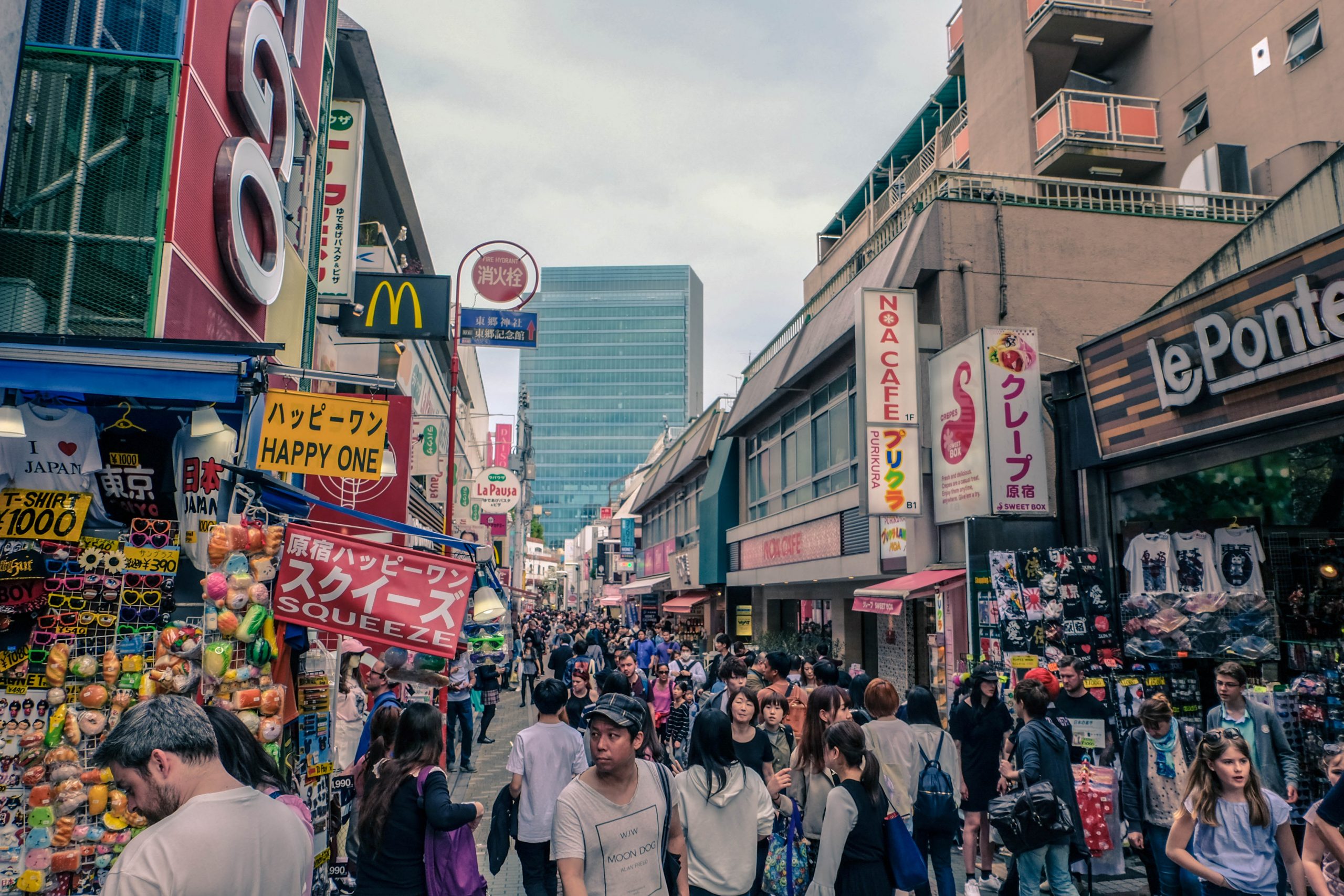
- Shibuya Crossing – Visit the most incredible place in the city: Shibuya, the beating heart of Tokyo. Head to Shibuya Station, then experience the iconic and energetic Shibuya Crossing. You will want to cross this every possible way and be part of thousands of people feeling the true energy of Tokyo. Pay homage to Hachiko, the loyal dog, at his statue near the Hachiko exit, now a popular meeting point with young locals. Navigate the bustling pedestrian scramble and enjoy the view from the Shibuya Sky observation deck or nearby cafés.
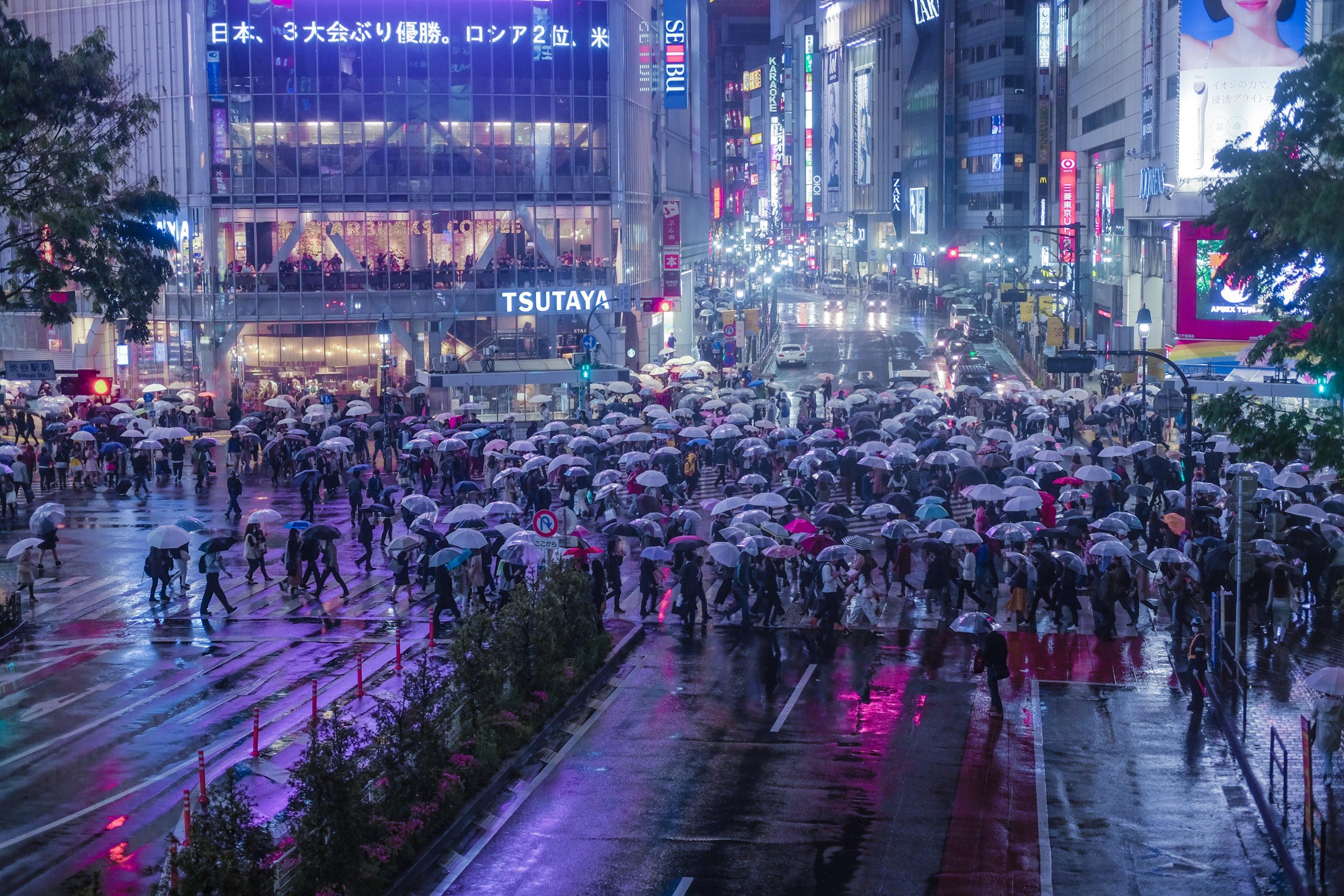
Location: 2 Chome-2-1 Dogenzaka, Shibuya City, Tokyo
How to get there: Take the JR Yamanote Line from Harajuku Station to Shibuya Station. The famous crossing is just outside the station’s Hachiko Exit.
Useful tips and information: For a great view of the crossing, head to the Starbucks located in the Tsutaya building or the Shibuya Sky observation deck at sunset. If you’re after a free viewing point, I recommend Shibuya Hikarie building on the 11th floor. - Shibuya Shopping – Wander through Shibuya’s vibrant shopping and fashion districts, visiting retail complexes like Shibuya 109, Shibuya Hikarie, and Shibuya Parco. Don’t miss the serene rooftop at Shibuya Parco or the great souvenirs at Loft. For an atmospheric photo opportunity, visit the Shibuya Yokocho right next to Miyashita Park.
Satisfy your sushi cravings at Katsumidori Seibu Shibuya, a unique conveyor belt sushi restaurant that’s super foreign friendly. Order using a tablet and watch as a mini Shinkansen train delivers your sushi right to your table.Location: Center Gai, Shibuya City, Tokyo
How to get there: Center Gai is a shopping street located just a short walk from Shibuya Crossing.
Useful tips and information: Popular shopping spots include Shibuya 109, Tokyu Hands, and Loft. This is the ideal place for really great for finding epic Japanese souvenir shops.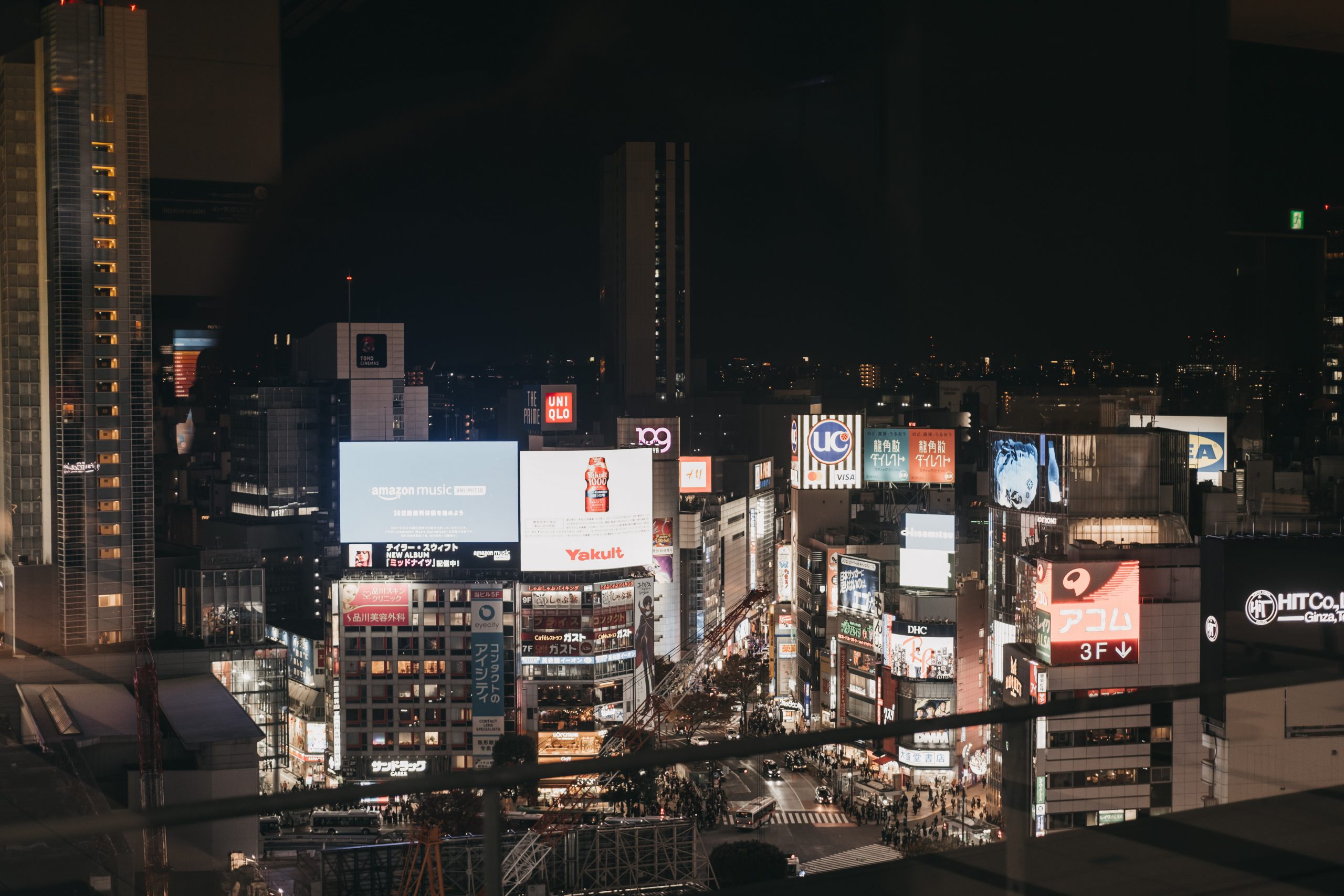
Day 2: Shinjuku
- Shinjuku Gyoen – Begin your second day of your 5-day Tokyo itinerary with a peaceful visit to Shinjuku Gyoen. It’s one of the loveliest parks in Tokyo and honestly, it’s so large, it will probably take you the whole morning to explore it. The park comprises three main sections: the Japanese Traditional Garden, the French Formal Garden, and the English Landscape Garden. Visit during cherry blossom season or autumn for the most breathtaking views.
My top tip here is to not miss the lesser known Shinjuku Gyoen Greenhouse, home to over 1700 tropical plants. It’s free to enter, and it’s located in the park’s northeast corner. One of the best things to do in Shinjuku.Location: 11 Naitomachi, Shinjuku City, Tokyo
How to get there: Take the Marunouchi Line to Shinjuku-Gyoemmae Station. The park is just a 5-minute walk from the station.
Useful tips and information: Shinjuku Gyoen is open from 9:00 AM to 4:30 PM, with last entry at 4:00 PM. The admission fee is 500 yen for adults.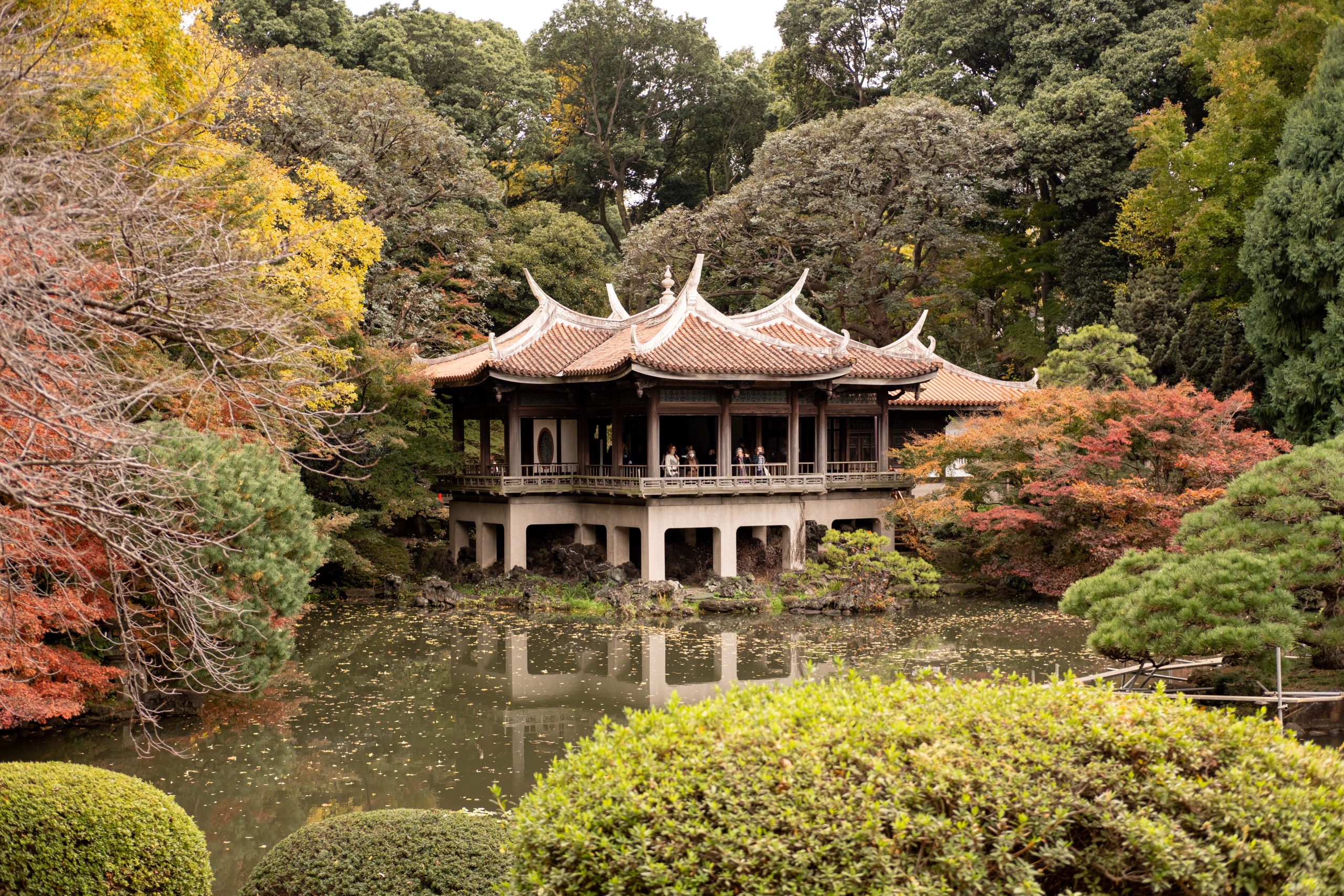
- Don Quijote – Affectionately known as Donki, Don Quijote in Shinjuku is one of the biggest in the whole of Tokyo. Prepare to enjoy many stories full of Japanese merchandise including items from Japanese pop culture, cosmetics, snacks, and souvenirs. You can easily spend a whole day here, so make sure to keep an eye on the time, as there are plenty more stops for the day.
Find really great Tokyo magnets here for family and friends for much cheaper prices than in other places around the city.Location: 1-16-5 Kabukicho, Shinjuku City, Tokyo
How to get there: Take the JR Yamanote Line to Shinjuku Station and exit at the East Exit. The store is a 10-minute walk from the station.
Useful tips and information: Don Quijote is open 24/7, so you really don’t need to rush with your shopping. Remember to bring your passport for tax-free shopping.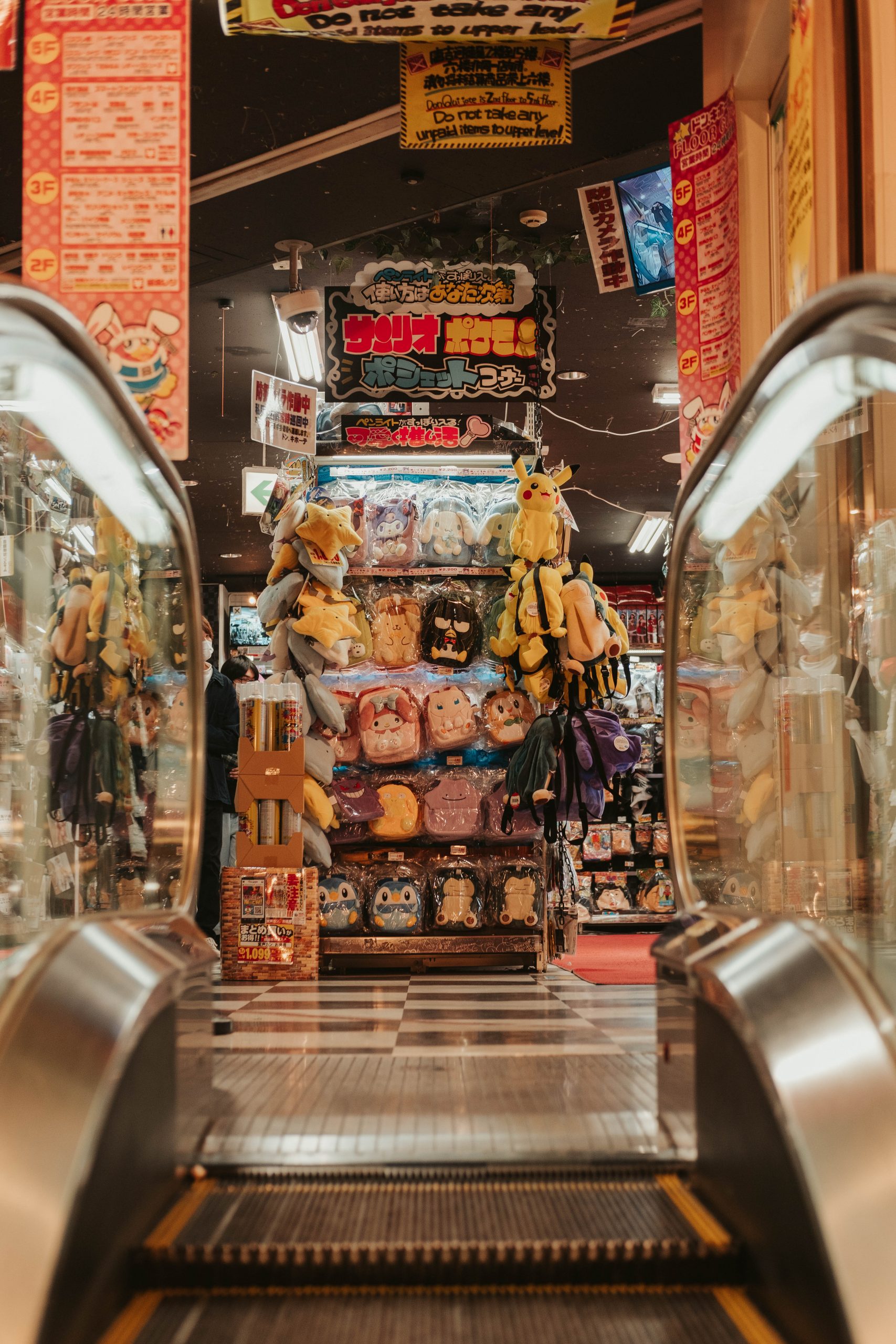
- Tokyo Metropolitan Government Building – Visit the Tokyo Metropolitan Government Building (Tocho) and its two free observation decks for stunning panoramic views of Tokyo. Entrance to either tower is entirely free of charge! Just remember that each tower offers different vista points of Tokyo.
Located on the 45th floor of both the North and South towers, these observatories offer views of landmarks like Tokyo Tower, Tokyo Skytree, and Mount Fuji on clear days.
Location: 2-8-1 Nishishinjuku, Shinjuku City, Tokyo
How to get there: Take the JR Yamanote Line to Shinjuku Station, and exit at the West Exit. The building is a 10-minute walk from the station.
Useful tips and information: The observation decks are open from 9:30 AM to 11:00 PM, and admission is free. Visit during sunset for breathtaking views.
- Kabukicho – If you want to take the coolest pictures of Tokyo with neon lights, crazy shops and blinking ads, then Kabukicho is the place for it. Tokyo’s largest adult entertainment area, Kabukicho is filled with colours and towering billboards. While there are adult venues here, you’ll also find attractions suitable for general audiences too, so you don’t need to be worried about visiting. It is true, though, most of the establishments are run by the yakuza, so it is best to just walk around but not touch anyone or anything.
For the cutest photo spot, don’t miss the Godzilla statue at the entrance to the Toho Cinemas building.Location: Kabukicho, Shinjuku City, Tokyo
How to get there: Kabukicho is just a 5-minute walk from the East Exit of Shinjuku Station.
Useful tips and information: While Kabukicho is generally safe, be cautious of touts and unsolicited offers. It’s best to research reputable establishments before visiting or, better yet, have a Japanese guide with you. This is especially important if you plan on actually entering any of the adult only establishments here.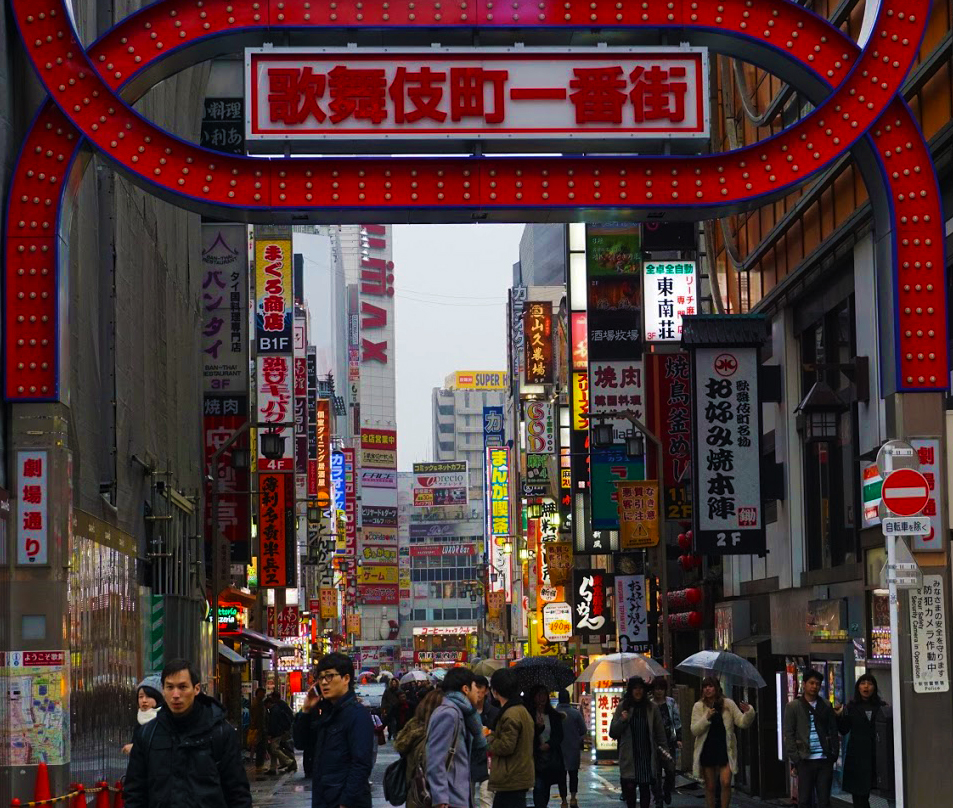
- Omoide Yokocho – Omoide Yokocho or Memory Lane or Piss Alley how some like to call it, it’s a really clean and atmospheric street is filled with bars and eateries specializing in yakitori (chicken skewers). Visit in the evening to mingle with Japanese salarymen, enjoying beer and grilled chicken. For a more guided experience, consider booking a local food tour, so you can really enjoy the experience.
Location: 1-2 Nishishinjuku, Shinjuku City, Tokyo
How to get there: Omoide Yokocho is just a 3-minute walk from the West Exit of Shinjuku Station.
Useful tips and information: The area is popular for yakitori and other izakaya-style food. Be prepared for small, crowded spaces and a lively atmosphere. My advice is to visit in the evening when the alley comes to life.
Day 3: Asakusa and Ueno
- Senso-ji – Begin your day at the Senso-ji Temple, Tokyo’s oldest and most prominent Buddhist temple. Founded in 628, Senso-ji is dedicated to Kannon, the Buddhist goddess of mercy. While Senso-ji itself is the main attraction, there are quite a few things to do around the temple grounds too, including seeing the five-story pagoda and the Asakusa Shinto shrine. If you happen to visit Tokyo in late Spring, make sure to check out the Sanja matsuri, one of the main festivals in Tokyo.
Don’t miss the opportunity to draw an Omikuji, a Japanese fortune-telling strip. Head to the Omikuji-torii and shake the box to receive a numbered stick, which corresponds to a specific fortune in a drawer. Keep a good fortune as a lucky charm, but tie a bad fortune to the designated Omikuji-kuyo area, so the Gods can protect you from any misfortune.
Location: 2 Chome-3-1 Asakusa, Taito City, Tokyo 111-0032, Japan
How to get there: Take the Ginza Line or Asakusa Line to Asakusa Station. The temple is a 5-minute walk from the station.
Useful tips and information: Visit early in the morning to avoid crowds. Also, don’t forget to enjoy the beautiful five-story pagoda and the Kaminarimon (Thunder Gate).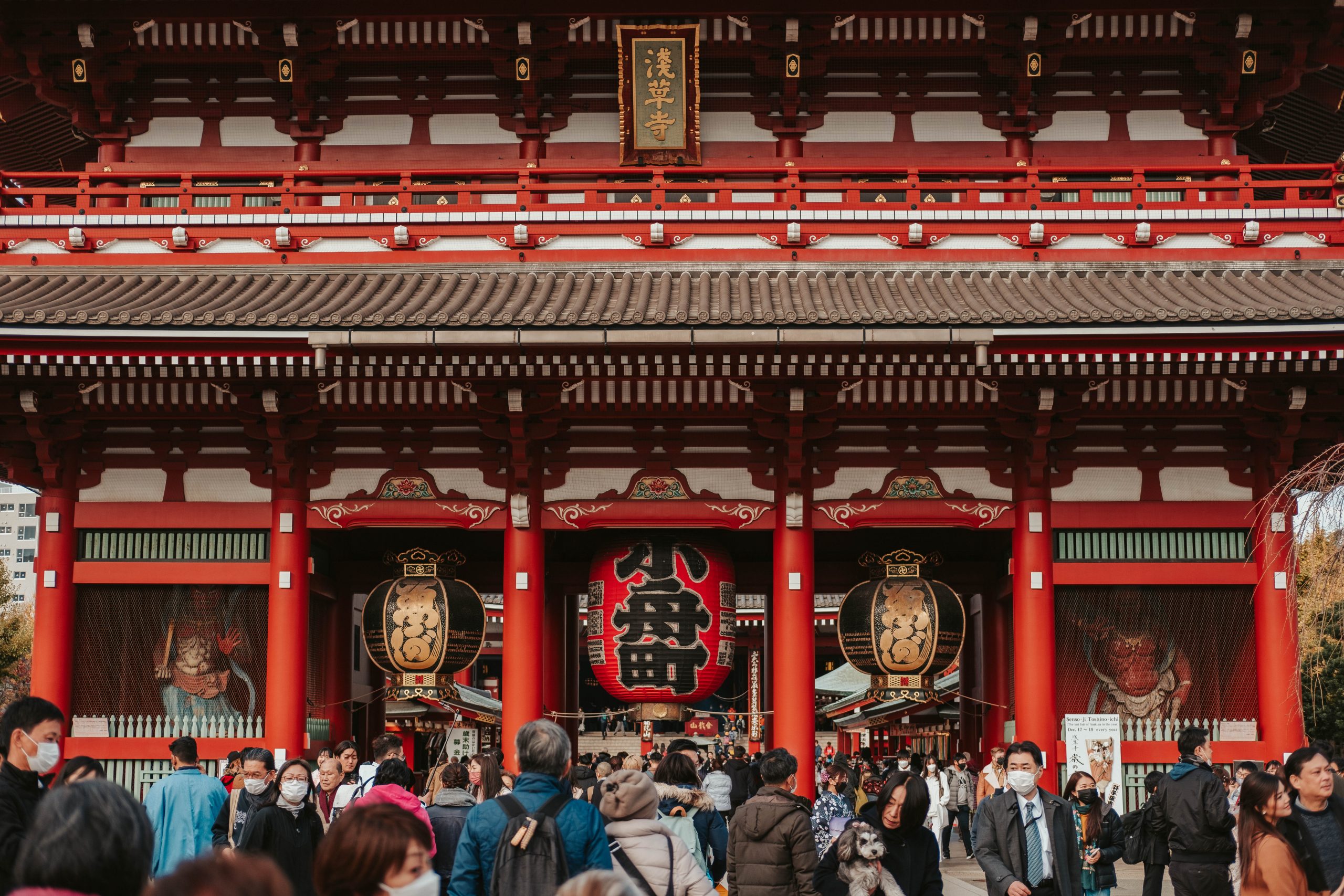
- Nakamise Shopping Street – After visiting Senso-ji, stroll down the lively Nakamise Shopping Street, a historic pedestrian alley brimming with colourful shops and stalls. This centuries-old street is perfect for discovering traditional Japanese souvenirs, like folding fans, kimonos, and local crafts. It’s an ideal place to grab some souvenirs here, and my recommendation is to get a Daruma doll. A Daruma doll is a traditional Japanese doll modelled after Bodhidharma, the founder of the Zen tradition. The doll comes with white eyes. The story has it that if you make a wish, you must colour one of the Doll’s eyes and wait for your wish to come true, before colouring your Doll its second eye.
Location: 1 Chome-36-3 Asakusa, Taito City, Tokyo 111-0032, Japan (right outside Senso-ji Temple)
How to get there: Nakamise Street is located along the approach to Senso-ji Temple, just a short walk from Asakusa Station.
Useful tips and information: Try local snacks like ningyo-yaki (small cakes filled with red bean paste) and pick up traditional souvenirs.
- Kappabashi Street – Known as Kitchen Town, Kappabashi Street is a must-visit destination for high-quality, affordable household items and kitchenware. If you’ve wanted high-quality ramen bowls, chopsticks, superb sake sets, this is the place for you.
Located just a 15-minute walk from Senso-ji, this street is home to over 170 unique shops, making it popular among restaurant owners, professional chefs, and tourists alike. I recommend checking as many of the shops as possible to find your perfect ceramics. If you decide to buy something, the shopkeeper will wrap them up really well for you, so you can easily transport these fragile items back home.Location: 3 Chome-18-2 Matsugaya, Taito City, Tokyo 110-0036, Japan
How to get there: Walk 10-15 minutes from Asakusa Station or take the Ginza Line to Tawaramachi Station, then walk for about 5 minutes.
Useful tips and information: Most shops are open from 9 am to 5 pm, and some are closed on Sundays. Don’t forget to check out the giant chef’s head statue at the entrance of the street.
- Explore Ueno Park – Spend a leisurely afternoon in Ueno Park, one of Tokyo’s largest green spaces. The park features a sizable pond, numerous museums, and historical attractions. If the weather is nice, take your family on a swan-shaped boat and row on Shinobazu Pond. For the most incredible picture, go to the viewing platform at Kiyomizu Kannon-do temple to see the famous twisted Moon pine tree. This twisted pine is based on the famous ‘Moon Pine, Ueno’, part of the “100 Famous Views of Edo” by Ando Hiroshige.
Location: 5 Chome-20 Uenokoen, Taito City, Tokyo 110-0007, Japan
How to get there: Take the JR Yamanote Line, Ginza Line, or Hibiya Line to Ueno Station. The park is just a short walk from the station.
Useful tips and information: Visit during cherry blossom season to witness stunning scenery. Allocate enough time to explore the park’s various attractions, such as the Tokyo National Museum, Ueno Zoo, and Shinobazu Pond.
- Ame-yoko – In the evening, make your way to Ame-Yokocho, a lively shopping street next to Ueno Station. Once a black market area, Ame-Yoko now offers an array of vibrant shops, discount stores, clothing, and souvenirs.
It’s the perfect place to try some more street food for dinner, such as takoyaki, yakitori, and taiyaki. If you’re still hungry, explore the numerous restaurants and bars in the area, including traditional Izakayas (Japanese pubs) for a variety of food and drinks.Location: 6 Chome-10 Ueno, Taito City, Tokyo 110-0005, Japan (near Ueno Station)
How to get there: Ame-yoko is located right beside Ueno Station. Simply walk out of the station, and you’ll find the shopping street.
Useful tips and information: Be prepared for crowds, especially on weekends.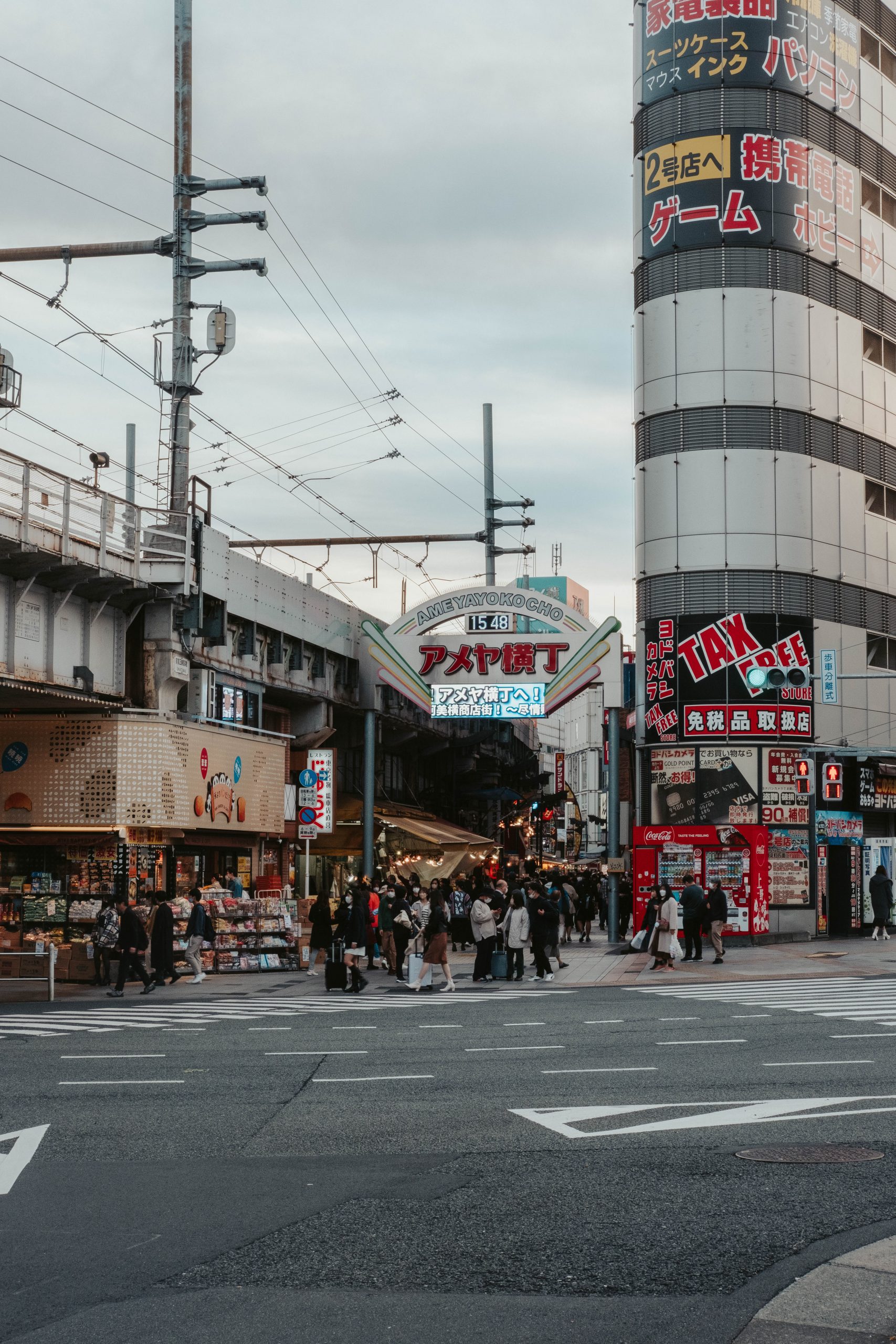
Day 4: Ginza & Central Tokyo
- Imperial Palace – Explore the Imperial Palace’s majestic surroundings, even though the palace itself is not open to the public. Photograph the stunning Nijubashi Bridge, set against a peaceful moat, which looks especially gorgeous in the morning light.
Explore the Imperial Palace East Gardens, which welcome you to enjoy the carefully maintained gardens and traditional Japanese landscaping.
For an upscale experience, reserve a table at the Palace Hotel Tokyo to indulge in their seasonal dessert, paired with a Japanese cup of tea. The dessert themes change with the seasons. I noticed that in the summer, you are more likely to find melon-based desserts, whereas in the autumn chestnuts are the main attraction.
Location: 1-1 Chiyoda, Chiyoda City, Tokyo 100-8111, Japan
How to get there: Take the JR Yamanote Line, Chuo Line, or Marunouchi subway line to Tokyo Station. From there, it’s a 10-minute walk to the Imperial Palace.
Useful tips and information: The palace grounds are open to the public, but the inner grounds are only accessible during guided tours or special occasions. Don’t miss the picturesque Nijubashi Bridge and the beautiful East Gardens, which are open to the public year-round. Check the official website for opening hours and any changes in the schedule.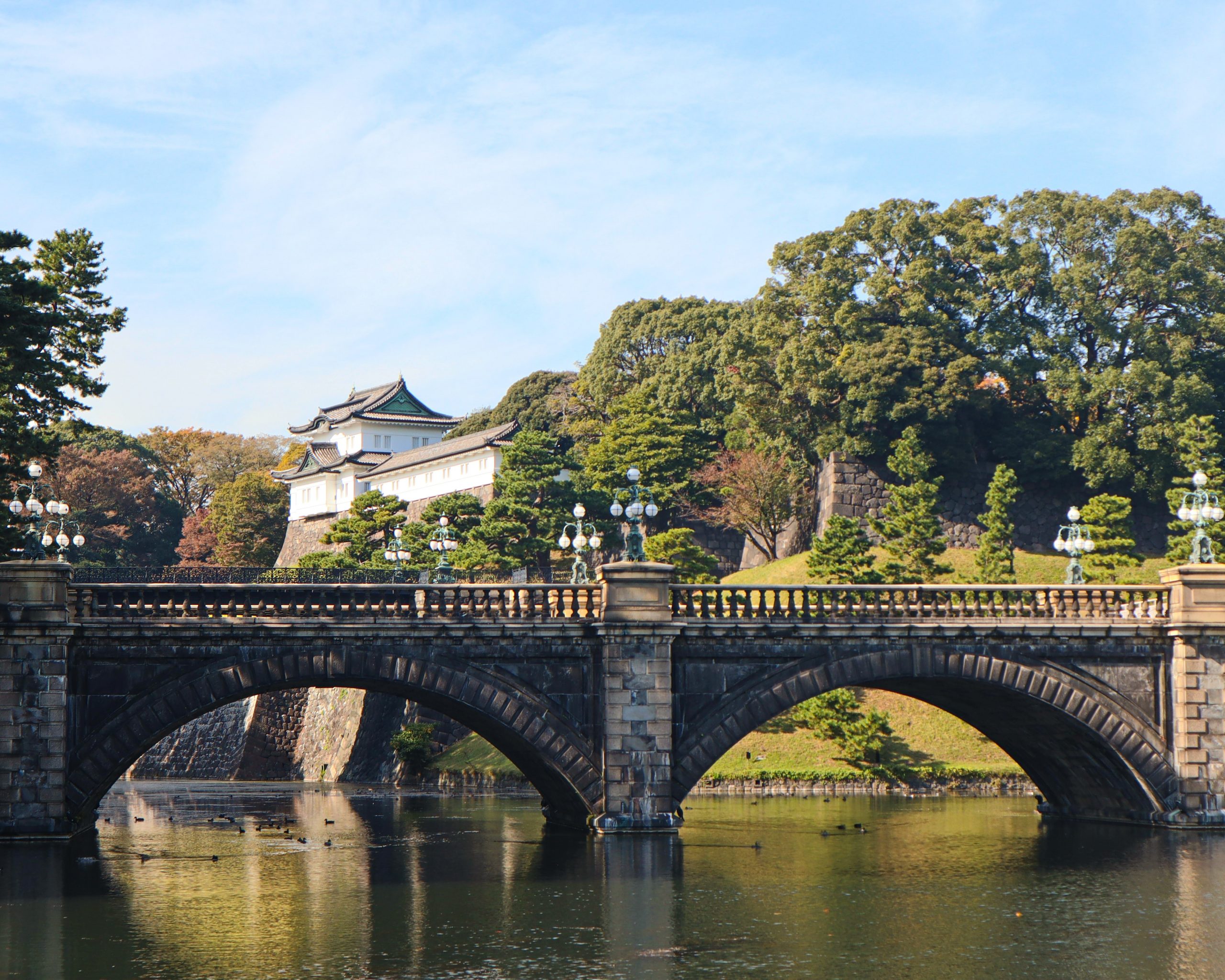
- Kitte Building – Head to the rooftop garden of Kitte Building, which offers a great viewing point for Shinkansens coming and out of the Tokyo station. Kitte Building is pretty big on its own, full of retail shops and restaurants.
For lunch, I recommend Shinshu-Matsumoto Hikariya which is a really nice and authentic soba restaurant. Alternatively, head to Café Kai located on the ground floor and order a delicious matcha tiramisu or mille crêpe cake, which is my favourite.
Location: 2 Chome-7-2 Marunouchi, Chiyoda City, Tokyo 100-7003, Japan
How to get there: The Kitte Building is directly connected to Tokyo Station via the Marunouchi South Exit.
Useful tips and information: The Kitte Building houses various shops, restaurants, and a beautiful rooftop garden with a view of Tokyo Station. The building also hosts temporary exhibitions and events, so be sure to check their calendar before visiting.
- Chuo Dori – Ginza is my favourite shopping place in Tokyo and for good reason. Every tall building that lines Chuo Dori is almost a whole town on its own, with a crazy number of stores, restaurants, and sometimes even theatres. Every building is a beautiful maze full of something beautiful to buy, eat or try.
I recommend checking out the Ginza Wako store with its iconic Seiko clock tower. For the perfect chopsticks, head to Ginza Natsuno which specializes in fancy utensils. For stationary, head to Itoya and don’t miss their top floor to see their tiny hydroponic garden.
Location: Chuo Dori, Ginza, Chuo City, Tokyo, Japan
How to get there: Take the Ginza subway line, Marunouchi line, or Hibiya line to Ginza Station. Chuo Dori is just a short walk from the station.
Useful tips and information: Chuo Dori is Ginza’s main shopping street, featuring high-end boutiques, department stores, and art galleries. On weekends, the street becomes a pedestrian paradise, where you can walk and shop without traffic.
- Ginza Okinawan Washita Shop – Ginza Okinawan Washita Shop specializes in Okinawan products sourced directly from the islands. You will find all sort of cool art, food, and crafts from the region.
Experience the flavours of Okinawa and make sure to order some food from the restaurant located at the back of the store. Eat seaweed tempura which tastes fantastic, Okinawan soba and wash it all down with some Okinawan drinks such as awamori, made from rice.
You’ll find produce, cosmetics, and even clothing with colourful beach vibes. In the basement, there is a small stage which features performances from Okinawan locals.
In the basement, you’ll also discover a stage area for Okinawan performances and arts. Browse through a collection of shirts, t-shirts, and colourful totes that exude a cheerful beach vibe.Location: Kotsu Kaikan 1F 2-10-1 Yurakucho, Chiyoda-ku, Tokyo
How to get there: The shop is located within walking distance from Ginza Station, accessible via the Ginza subway line, Marunouchi line, or Hibiya line.
Useful tips and information: This store specializes in Okinawan products, including food, textiles, and souvenirs. It’s an excellent place to find unique gifts that showcase the distinctive culture of Japan’s southernmost islands.
- Ginza Six – No 5 day Tokyo itinerary is complete without a trip to Ginza Six, one of the newest shopping malls in Ginza. Although, this is no ordinary mall, as Ginza Six features shops, restaurants, bars, special art, a rooftop garden, an ice rink in the winter and even a Noh theatre.
I recommend checking out the Tsutaya Bookstore and the cool Starbucks Reserve Roastery for some unique cups of coffee. Head to the rooftop garden and admire Chuo Dori from above, while surrounded by lush gardens. You can see the Tokyo Tower from here and get a glimpse of the flagship Uniqlo store. Don’t miss the basement with its cool department stores full of cake shops, wine bars and unique products.Location: 6-10-1 Ginza, Chuo City, Tokyo 104-0061, Japan
How to get there: Ginza Six is a short walk from Ginza Station, which can be reached via the Ginza subway line, Marunouchi line, or Hibiya line.
Useful tips and information: Ginza Six is a luxury shopping mall with numerous high-end stores, boutiques, and art galleries. It also features a gorgeous rooftop garden and a Noh theatre. The basement food hall is a must-visit for foodies, offering a wide variety of gourmet Japanese and international cuisine.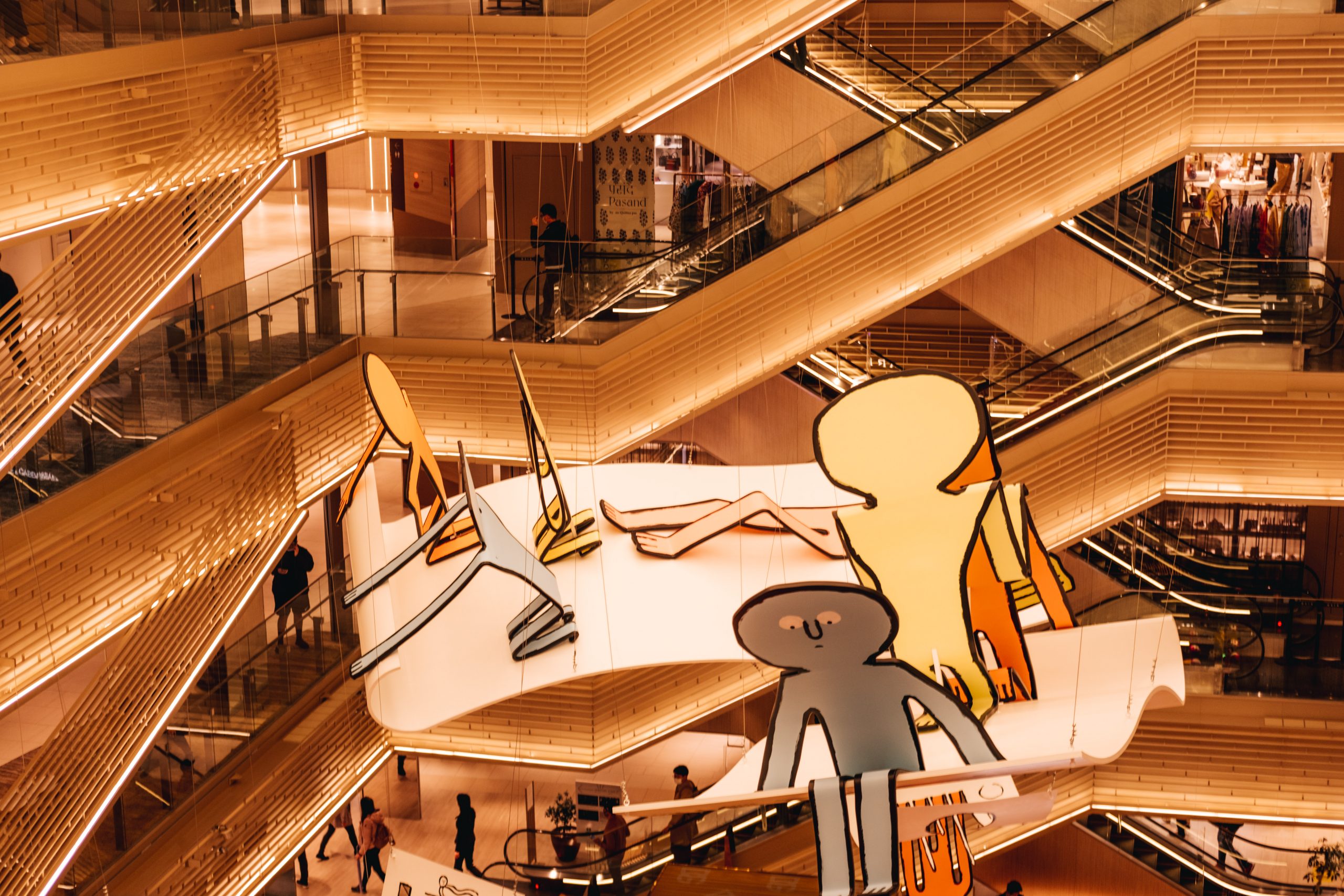
Day 5: Aoyama and Roppongi
- Nezu Museum – The last day of your 5 days in Tokyo itinerary, so let’s make it awesome! Begin your day in the sophisticated Aoyama area by exploring the Nezu Museum. While many come to the museum for its Japanese and Asian collection, the true highlight, however, is the breathtaking garden. You’ll be forgiven for thinking you teleported into Kyoto!
Wander along stone paths, admire the perfectly manicured gardens, and discover tea houses scattered all around the gardens. For a snack, enjoy a cup of tea with a seasonal Japanese cake at the garden restaurant, NEZUCAFÉ, while admiring the garden views.
Location: 6-5-1 Minami-Aoyama, Minato City, Tokyo
How to get there: The closest subway station is Omotesando on the Chiyoda, Ginza, and Hanzomon lines. It’s about an 8-minute walk from Exit A5 of the station.
Useful tips and information: The museum is closed on Mondays and may be closed for special exhibitions, so check their website before visiting. Photography is not allowed inside the museum.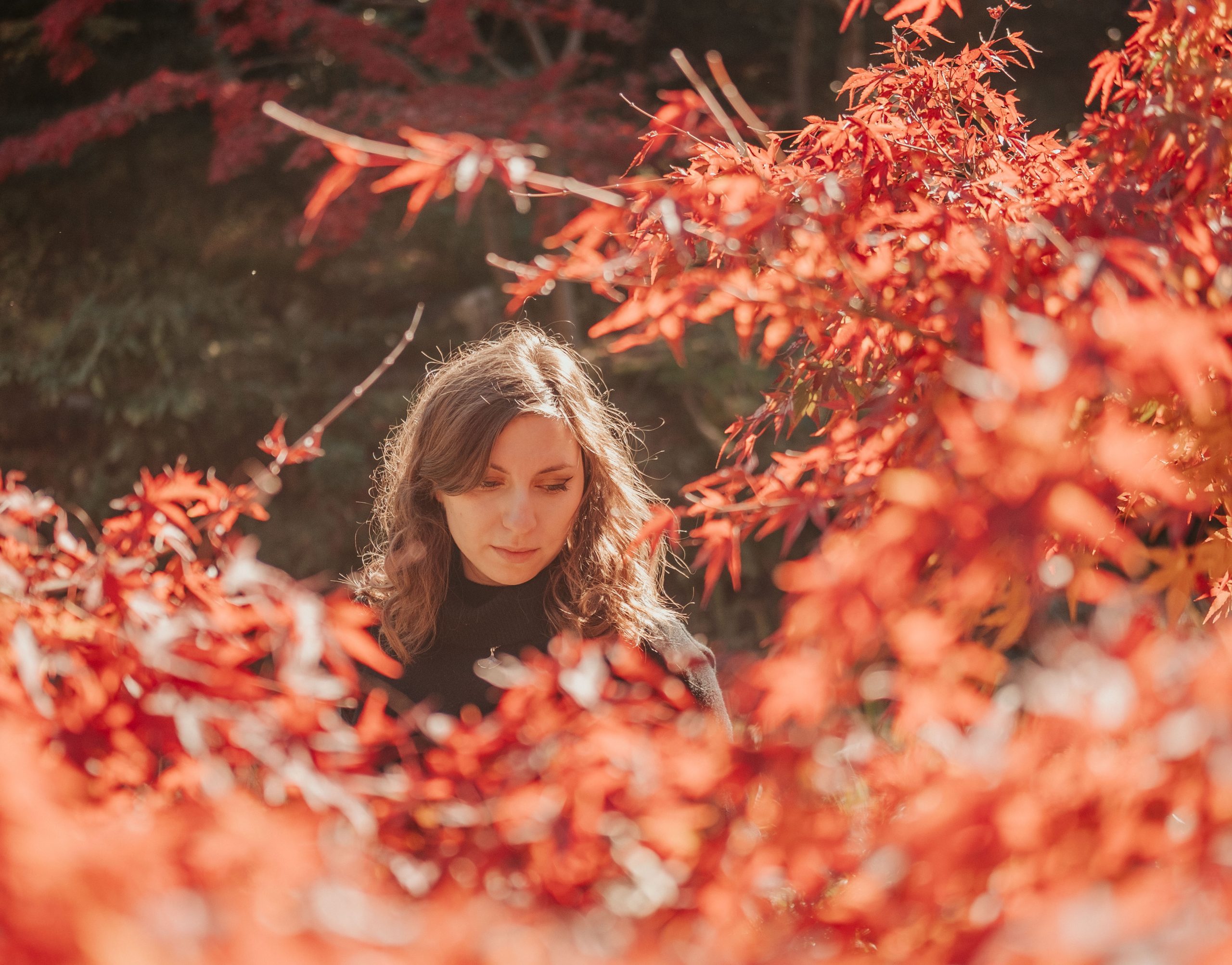
- Aoyama Flower Market Tea House – Perhaps one of the most beautiful restaurants you’ll see when you visit Tokyo, Aoyama Flower Market is a unique café and florist combination. But fair warning, this place can get fairly busy, especially on the weekends, so be prepared to queue for a while.
The menu offers a range of fresh, seasonal dishes, and the charming interior creates a romantic and enchanting dining experience. I recommend trying the omurice which comes with beautiful edible flowers. If you’ve got a sweet tooth, try the hana-kanmuri fresh toast with seasonal fruits, edible flowers, milk sauce, ice cream and whipped cream.Location: 5 Chome-4-41 Minamiaoyama, Minato City, Tokyo 107-0062, Japan
How to get there: It’s a 3-minute walk from Omotesando subway station on the Chiyoda, Ginza, and Hanzomon lines. Use Exit A4 and walk down Aoyama-dori street.
Useful tips and information: The tea house can get busy, so visiting during off-peak hours or making a reservation is recommended.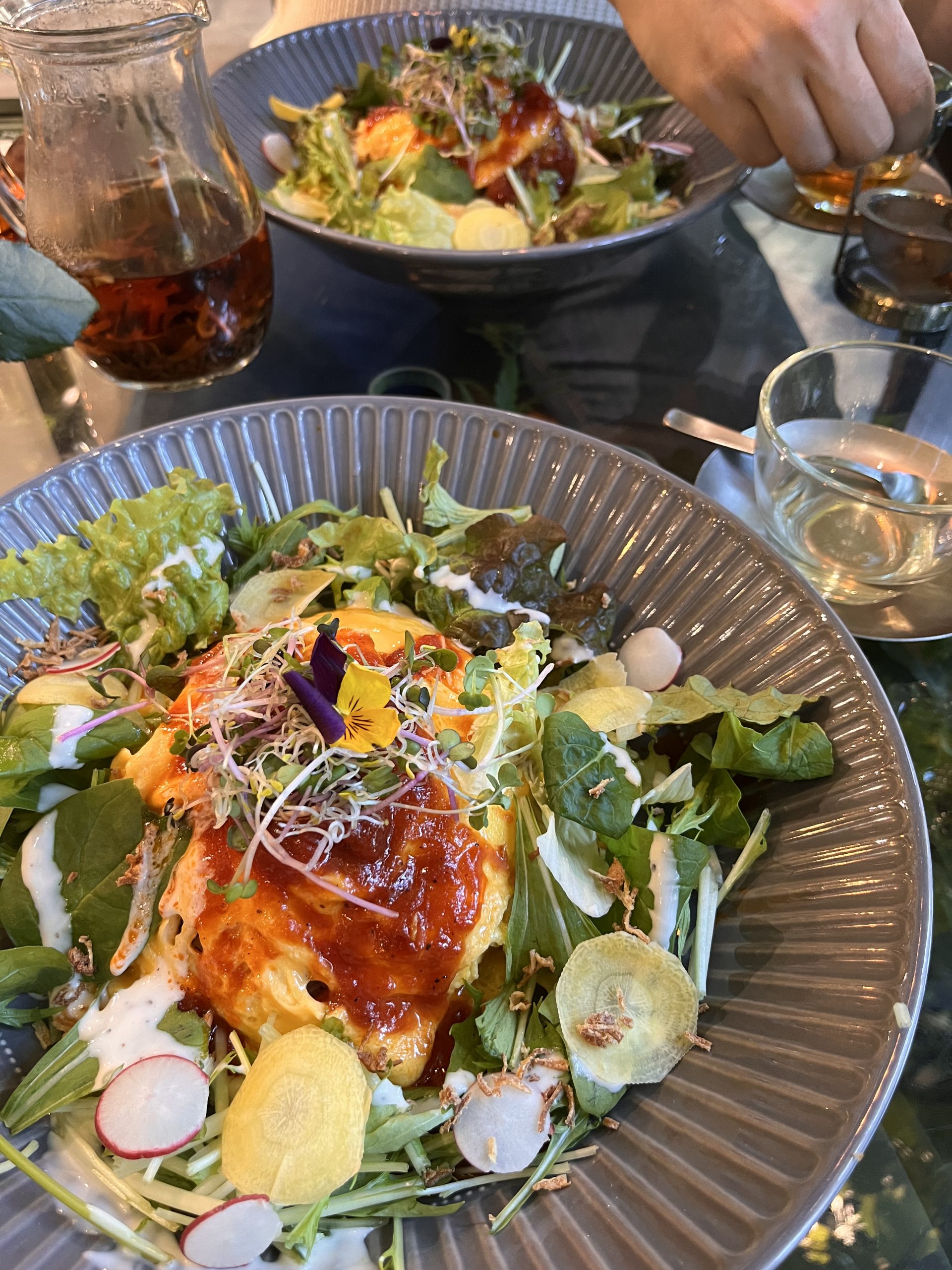
- Omotesando – Spend your afternoon exploring the stylish Aoyama district and the luxurious Omotesando shopping street. Even if shopping is not for you, you’d love Omotesando as it is often compared to Paris’ Champs-Élysées. The avenue is lined with zelkova trees, that look especially stunning in the autumn or when lit up with fairy lights in the winter.
Visit the Gyre mall for contemporary art exhibitions and the MoMA Design Store. For a picturesque coffee break, head to the 4th-floor café or B1 for a unique coffee with Tamitu herbal honey.Location: The avenue stretches from Harajuku Station to Omotesando Station, in the Shibuya and Minato Wards of Tokyo.
How to get there: You can start from Harajuku Station (JR Yamanote Line) or Omotesando Station (Chiyoda, Ginza, and Hanzomon lines).
Useful tips and information: Omotesando is a popular shopping street, so it can get crowded during weekends and holidays. Visit during weekdays for a more relaxed experience.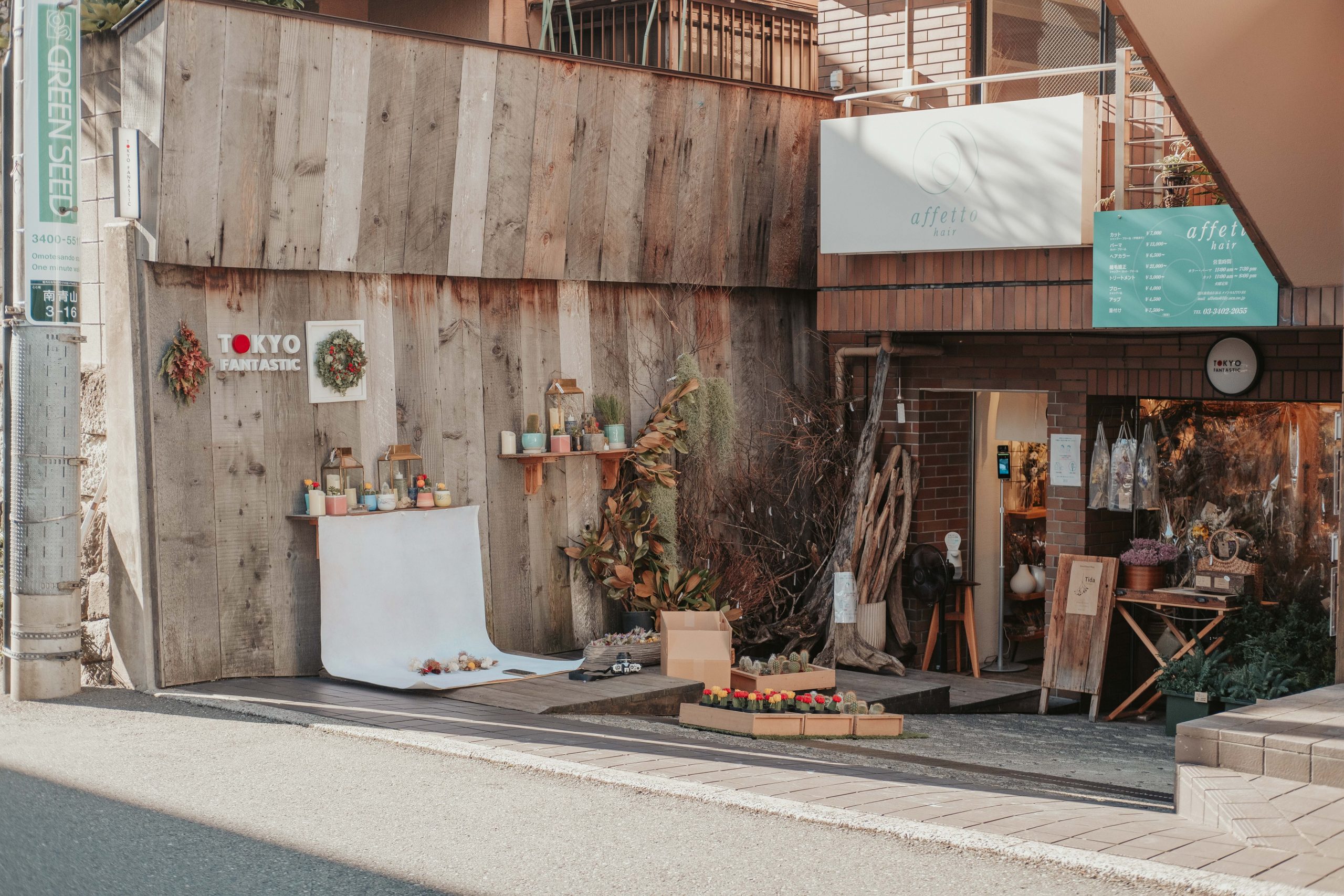
- Tokyu Plaza Omohara Garden – I discovered this place during my very first 2 weeks in Japan trip and I have continued to come back here ever since. This rooftop garden oasis remains a favourite spot for coffee with a view. I love it because it’s low-key with lovely fairy lights and decking, relaxing music and comes with some epic cityscape panorama. On clear days, you may even catch a glimpse of Mount Fuji, which looks especially wonderful during sunset.
Location: 4 Chome-30-3 Jingumae, Shibuya City, Tokyo 150-0001, Japan
How to get there: It’s a 4-minute walk from Meiji-Jingumae Station (Chiyoda and Fukutoshin lines) or a 5-minute walk from Harajuku Station (JR Yamanote Line).
Useful tips and information: The rooftop garden is on the 6th floor of the Tokyu Plaza Omotesando Harajuku building. It’s a great place to relax and enjoy the view, but it can get crowded during peak times.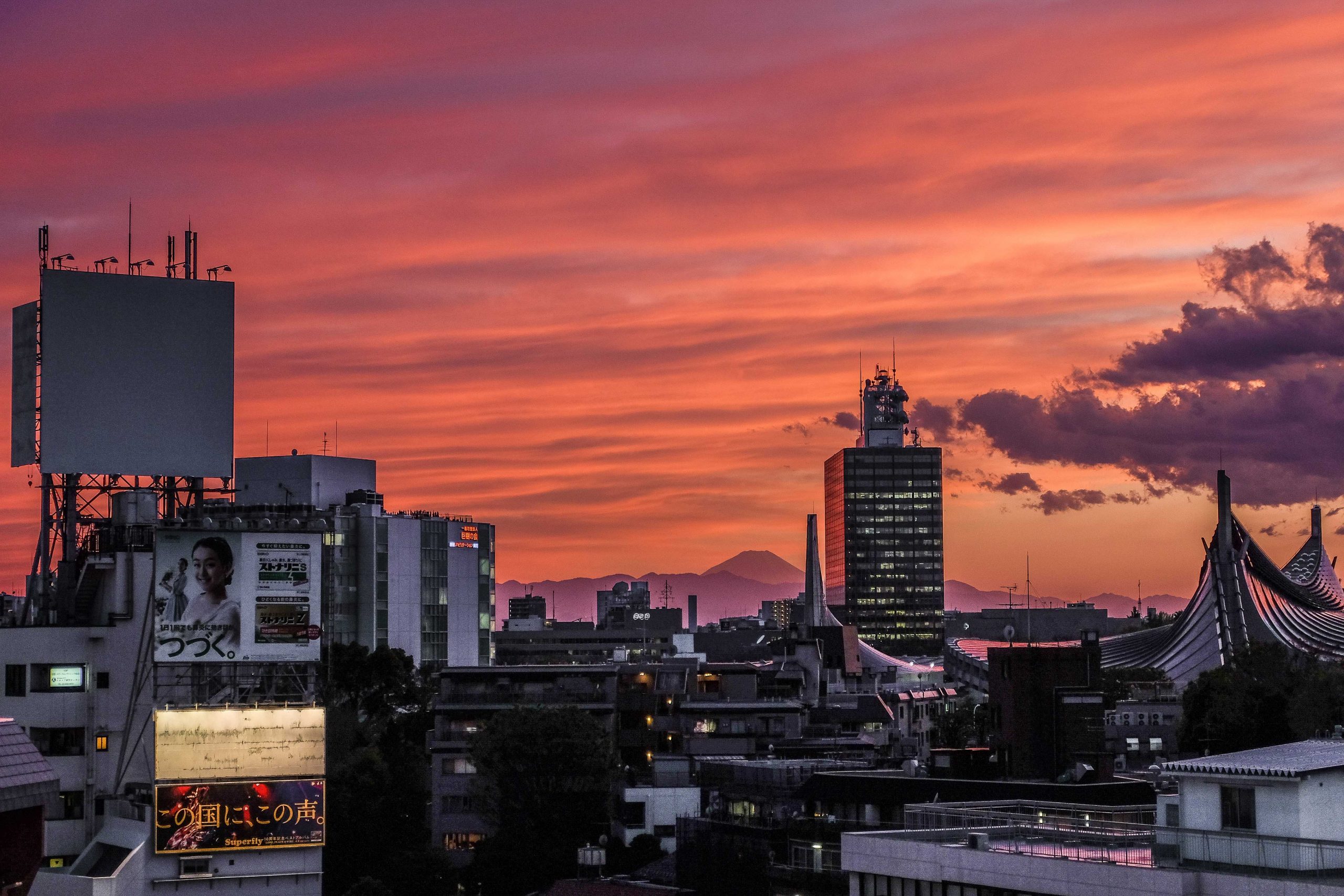
- Roppongi Hills Mori Tower – Depending on your energy levels, visit the Mori Art Museum, which is considered one of Tokyo’s best art museums. Located on the 53rd floor of the Mori Tower, it offers impressive city views but also really epic exhibitions. The museum is renowned for not having a permanent exhibition, which means there is always something new and exciting going on. Alternatively, if you’re feeling tired, skip the museum and head straight to the Roppongi Hills Sky Deck on top of the Mori Tower. This open-air rooftop provides unparalleled nighttime views of Tokyo’s skyline. I definitely recommend that you purchase tickets in advance for both the indoor observation deck and the outdoor sky deck to avoid queueing.
Location: 6 Chome-10-1 Roppongi, Minato City, Tokyo 106-0032, Japan
How to get there: It’s a 5-minute walk from Roppongi Station (Hibiya and Oedo lines). Use Exit 1C and follow the signs to Roppongi Hills.
Useful tips and information: The Tokyo City View observation deck on the 52nd floor offers stunning views of the city, while the Mori Art Museum on the same floor showcases contemporary art. Check their websites for admission fees and opening hours.
Final Thoughts on this 5 days Tokyo itinerary
I hope you enjoyed my complete 5 days in Tokyo itinerary which is full of awesome things to do, epic places to visit and really great attractions.
I created this itinerary from a place of love, as Japan is my favourite country and Tokyo remains my true home and my favourite place in the whole world. As a bit of background, I lived in Tokyo and continue to visit Tokyo every single year, so this “5 days Tokyo itinerary” really is based on what I truly recommend a first timer to maximize the time in Japan’s capital.
Please don’t forget to check my ultimate Japan travel guide, which really does contain all the information you’d otherwise get in an expensive guidebook. It’s free and dedicated to all Japan lovers out there. Do check my Japanese customs and manners book, which I’ve created in partnership with a Japanese illustrator. Enjoy your Tokyo trip!
Buy this Tokyo 5 Day Itinerary as a PDF ebook. It’s a printable itinerary with useful tips and resources that you can take with you on your trip to Japan.
Frequently Asked Questions
Is 5 days in Tokyo enough?
It’s possible to see and do a lot in Tokyo in 5 days, but remember that Tokyo is a vast city with countless things to do, so you do need to prioritize your activities. This is why I created this complete 5 day Tokyo itinerary, so you can see the most iconic neighbourhoods such as Shibuya, Shinjuku and Asakusa, as well as get to visit cultural sites like Meiji Shrine and Senso-ji, experience some of the best food scene and enjoy top attractions.
Ultimately, I’ve lived in Tokyo and I still feel there is much left to discover, and I continue to return to this city year after year for weeks, and I still can’t get enough. You will definitely have a lot of fun in your 5 days in Tokyo.
How many days is ideal for Tokyo?
It depends on your travel style and interests, but I believe 7 days in Tokyo is the right amount of time to spend exploring Japan’s capital. This ensures that you get to see the most iconic districts, see cultural sites and experience the best food scene.
On top of this, you can take day trips from Tokyo to places like Nikko or Hakone and see some lesser known vintage Tokyo districts, like Shibamata or Yanaka Ginza, which truly are mesmerizing and so unique.
Is 5 nights in Tokyo too long?
No, 5 nights in Tokyo is definitely not too long. Tokyo is huge and has so many unique districts to offer. You will have enough time to explore the diverse areas like Shibuya, Shinjuku, Asakusa and Ginza but also see the top attractions and indulge in the best food Tokyo has to offer. You have plenty of time to walk around some of the districts and immerse yourself in the unique Japanese culture.
Ultimately, if at any point it feels too long, you can easily get on a train and explore another nearby destination as a day trip from Tokyo. Visit Nikko, Hakone, Mount Fuji, Nagano or Kawagoe, all perfectly easy to reach and explore for a day.
How much do I need for 5 days in Tokyo?
The cost of a 5-day trip to Tokyo can vary depending on the type of traveller you are. On our latest Japan holiday we spent 28,300 yen ($195) per person per day, and this average included flights, accommodation, transportation, food, activities, souvenirs, and other small expenses. This is a for a mid-luxury budget holiday with some luxury dinners, top attractions and occasional splurges on fun souvenirs.
Generally speaking, this is a rough estimate of the costs you might incur during your trip:
Accommodation: Budget hotel: 4,000 to 8,000 yen per night
Mid-range hotel: 8,000 to 15,000 yen per night
Luxury hotel: 20,000 yen or more per night
Food – You can easily find a meal in Tokyo for 1000 yen at a ramen restaurant or even cheaper if you’re willing to eat at a convenience store. Mid-range restaurants can cost around 2,000 to 3,500 yen per meal, while high-end restaurants are expensive, over 20,000 yen per meal.
Transportation – A one-way train or subway ride in Tokyo typically costs around 200 to 500 yen. You can get a Suica card to save on the trips.
Activities – Admission fees for museums and attractions are between 500 and 2,000 yen per person per attraction. Some attractions are free of charge, and you can do plenty of free things in Tokyo.



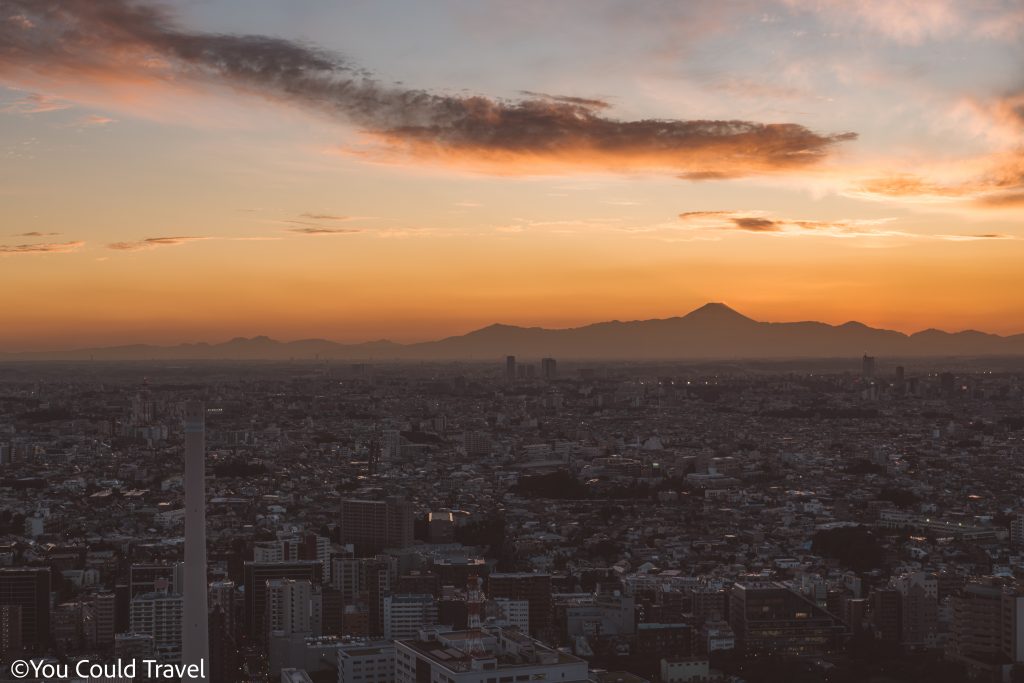
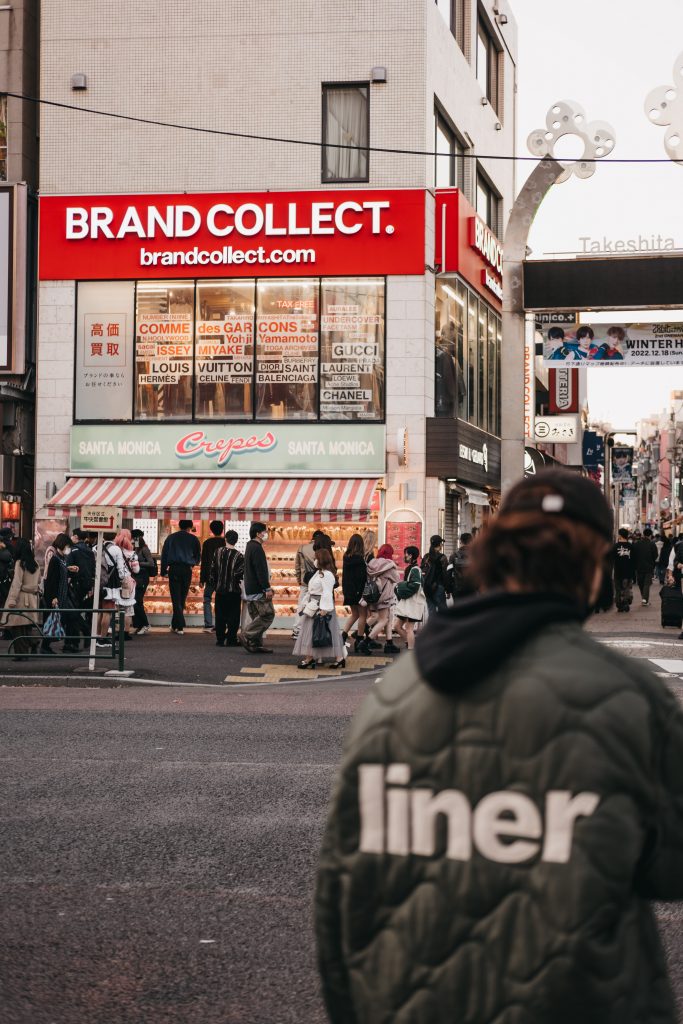

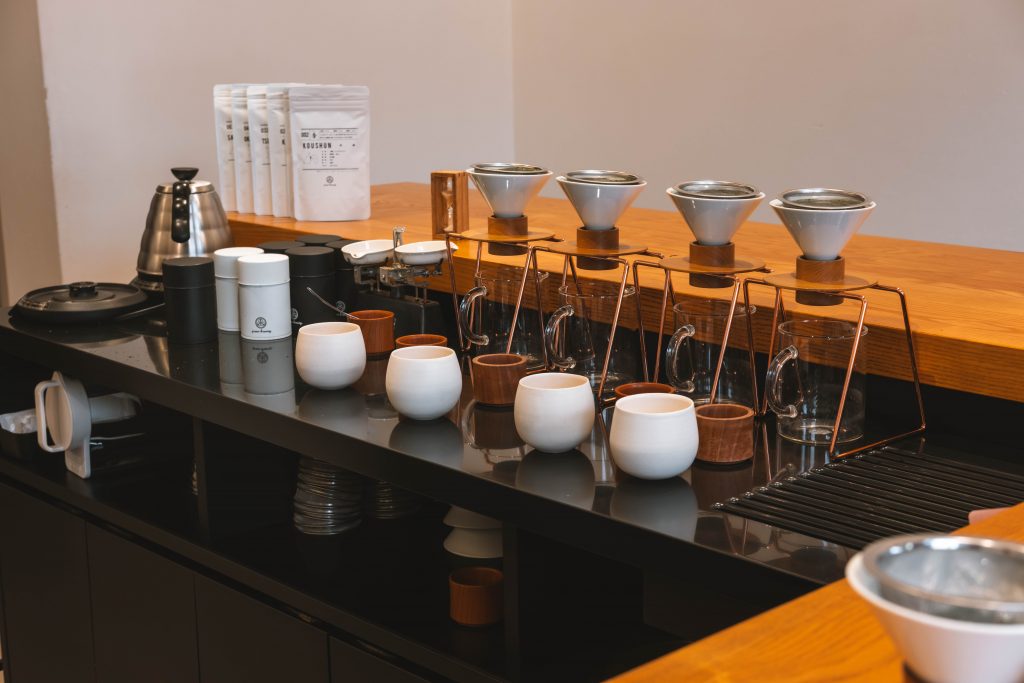

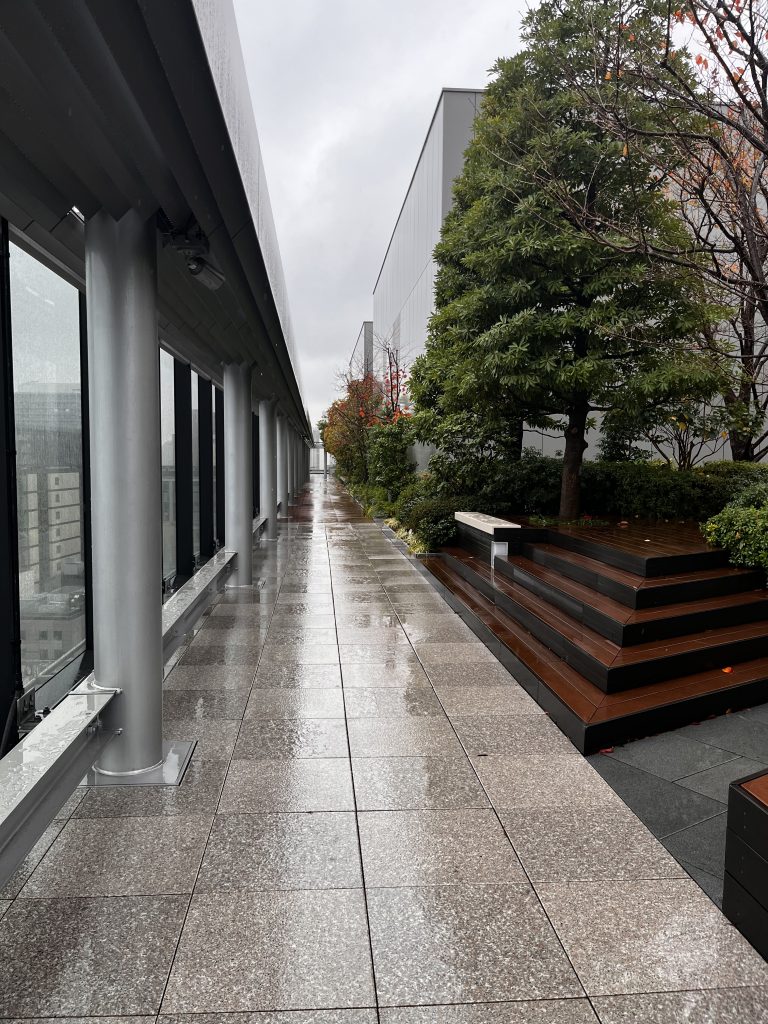


Leave a Reply